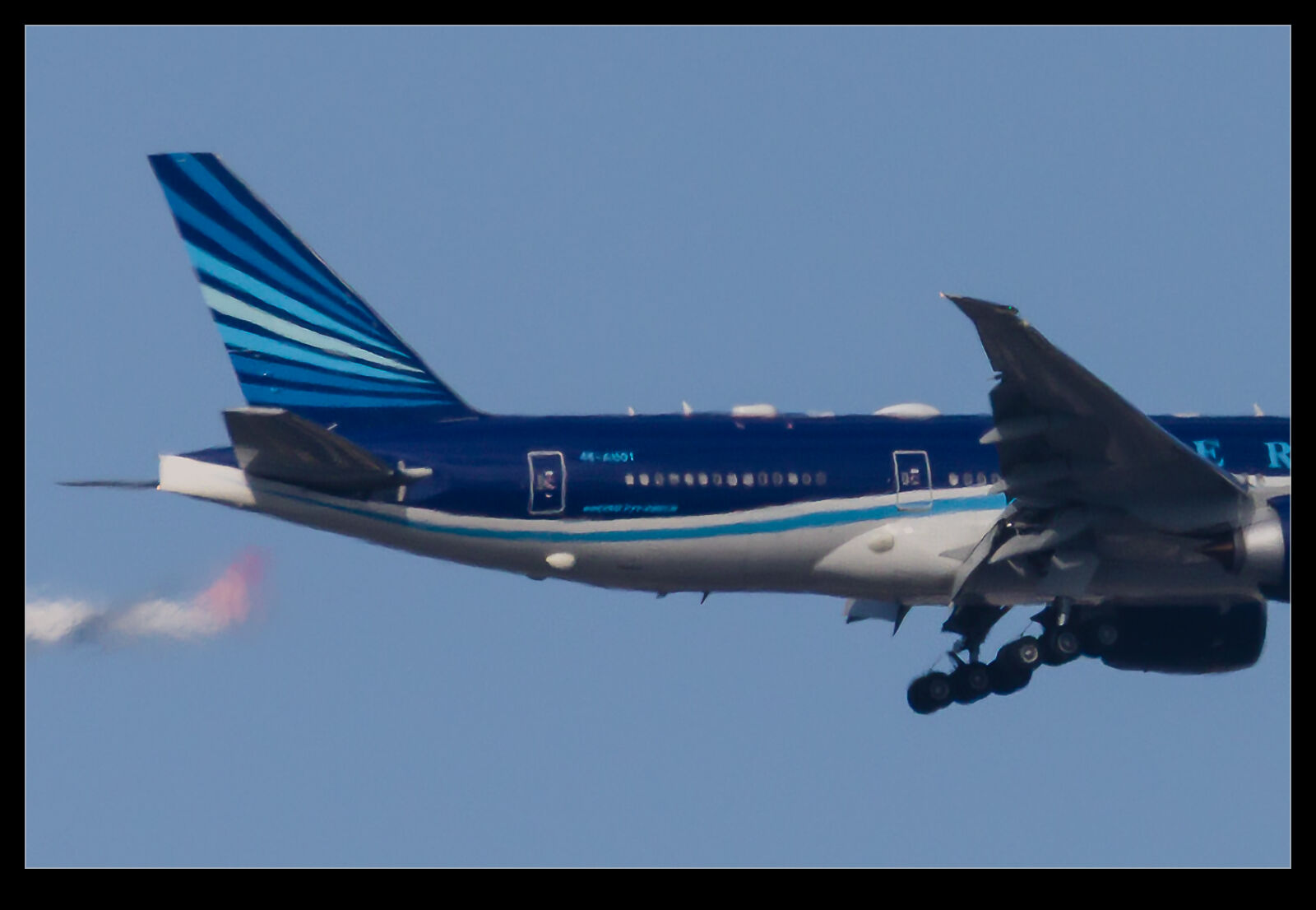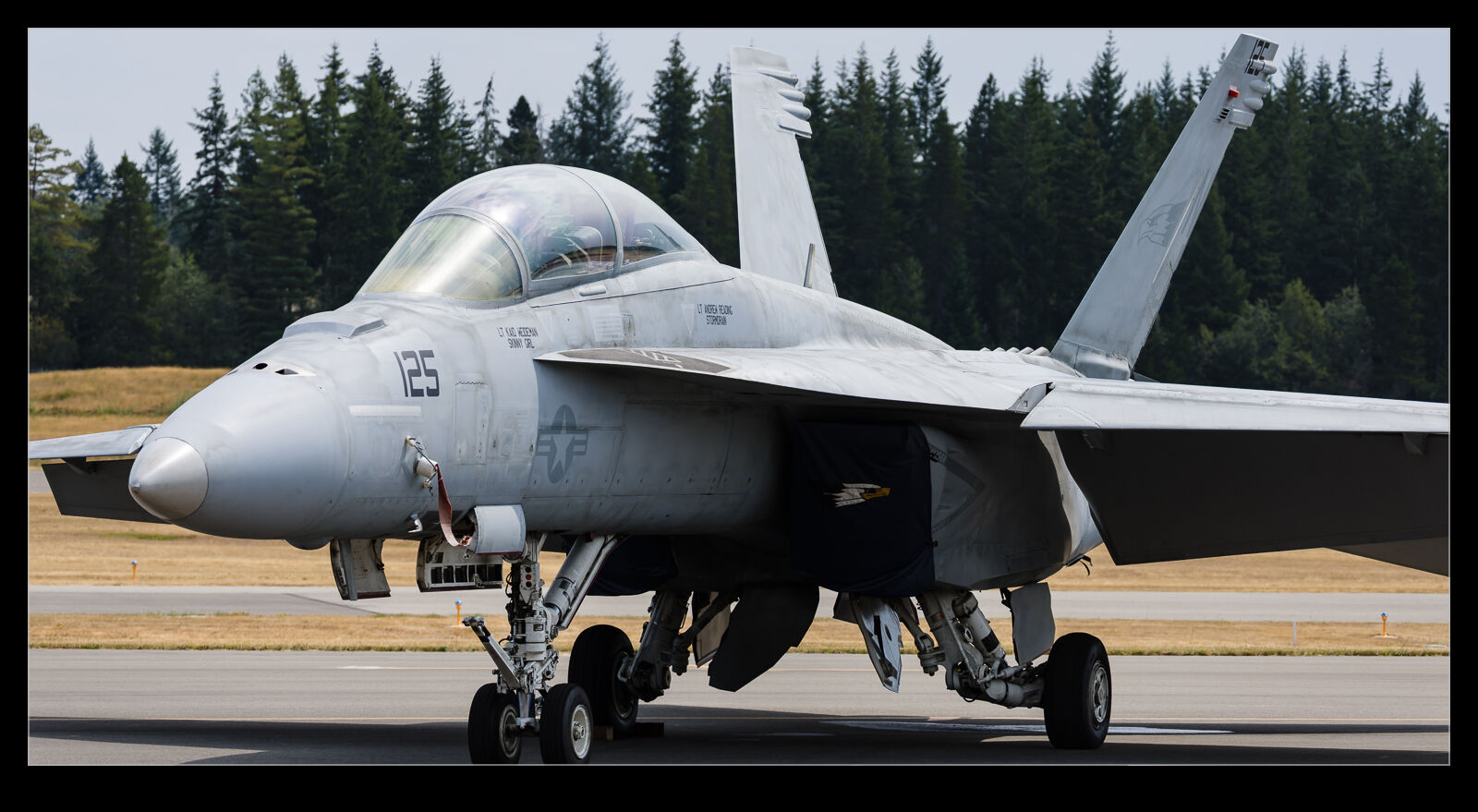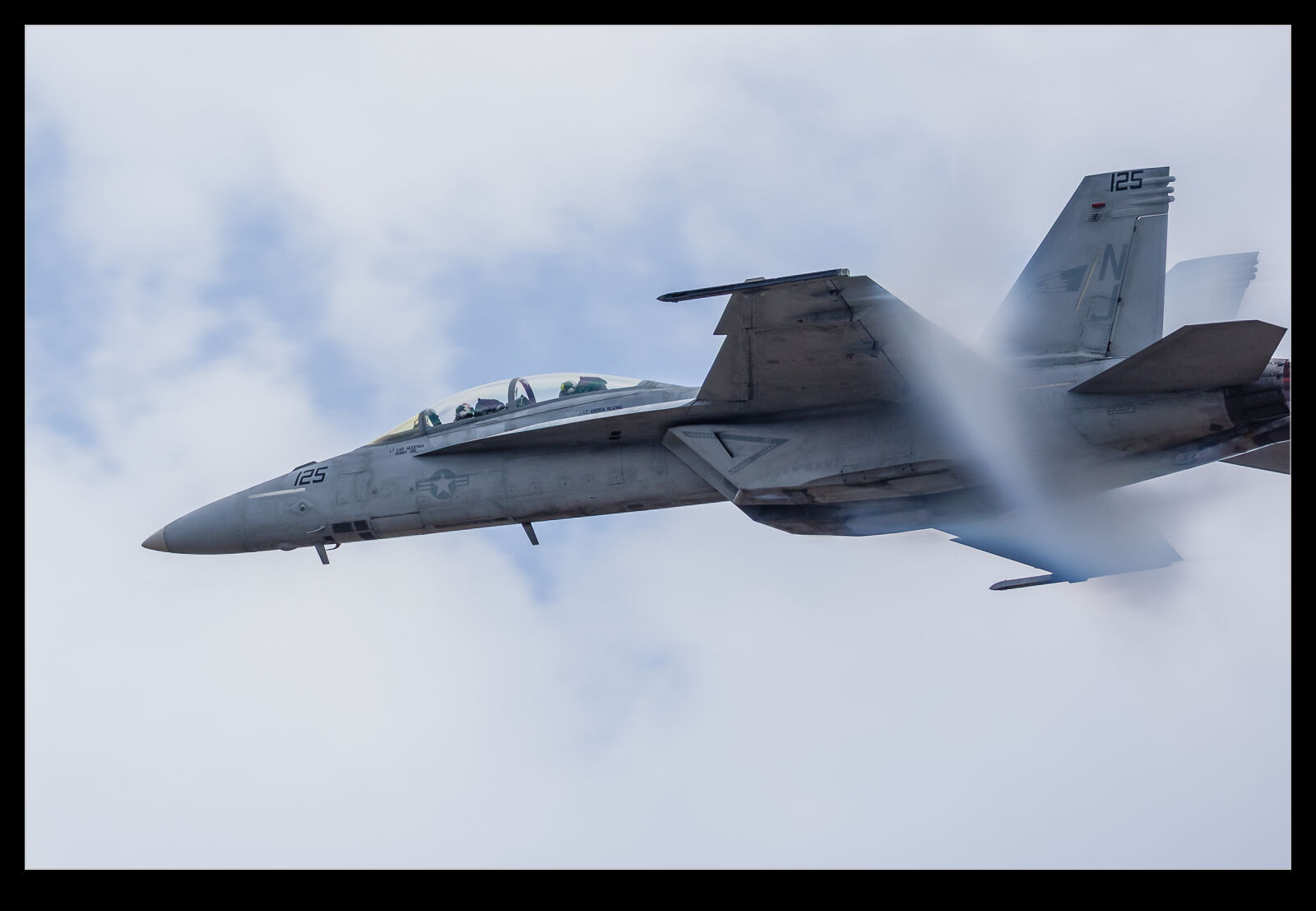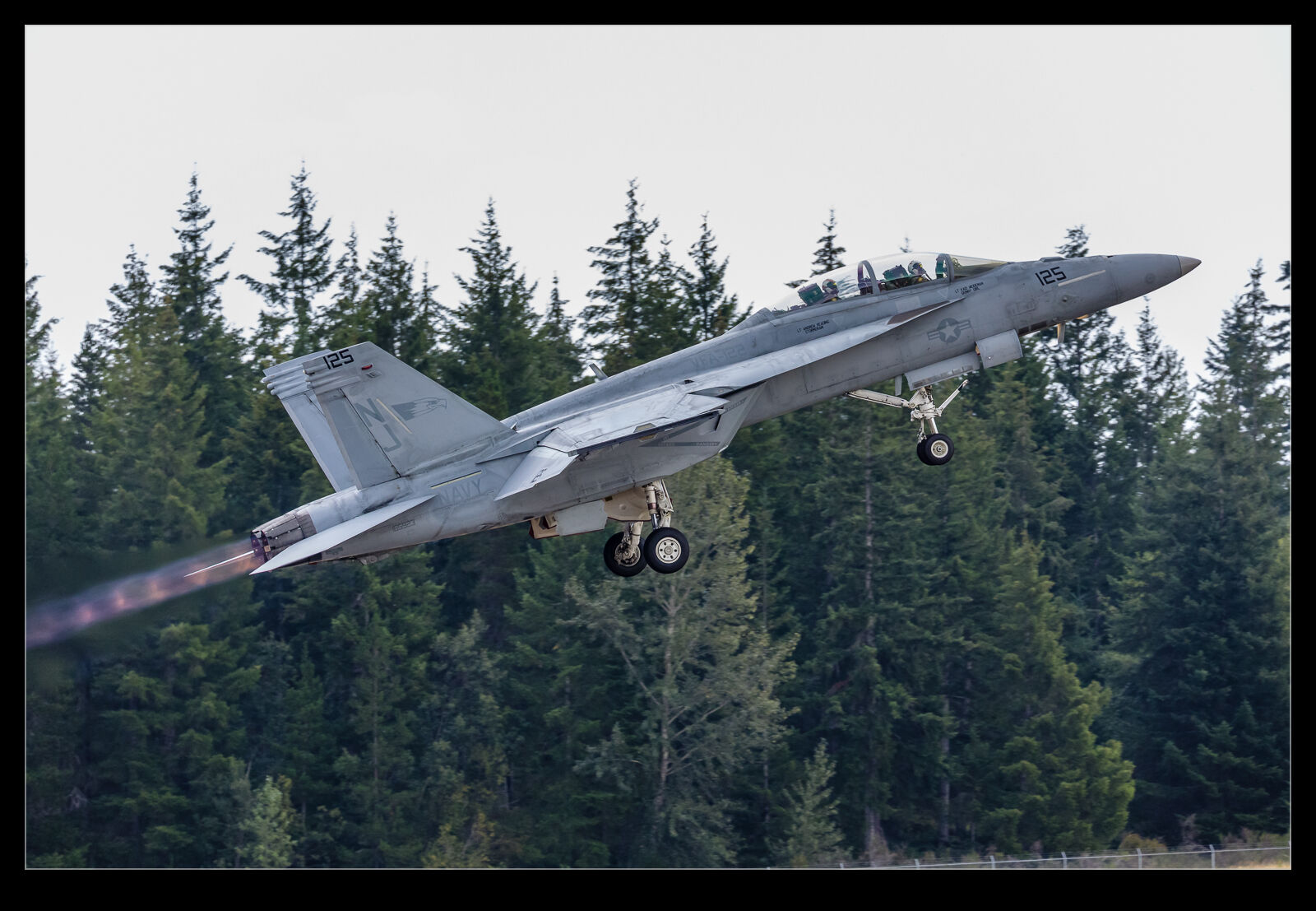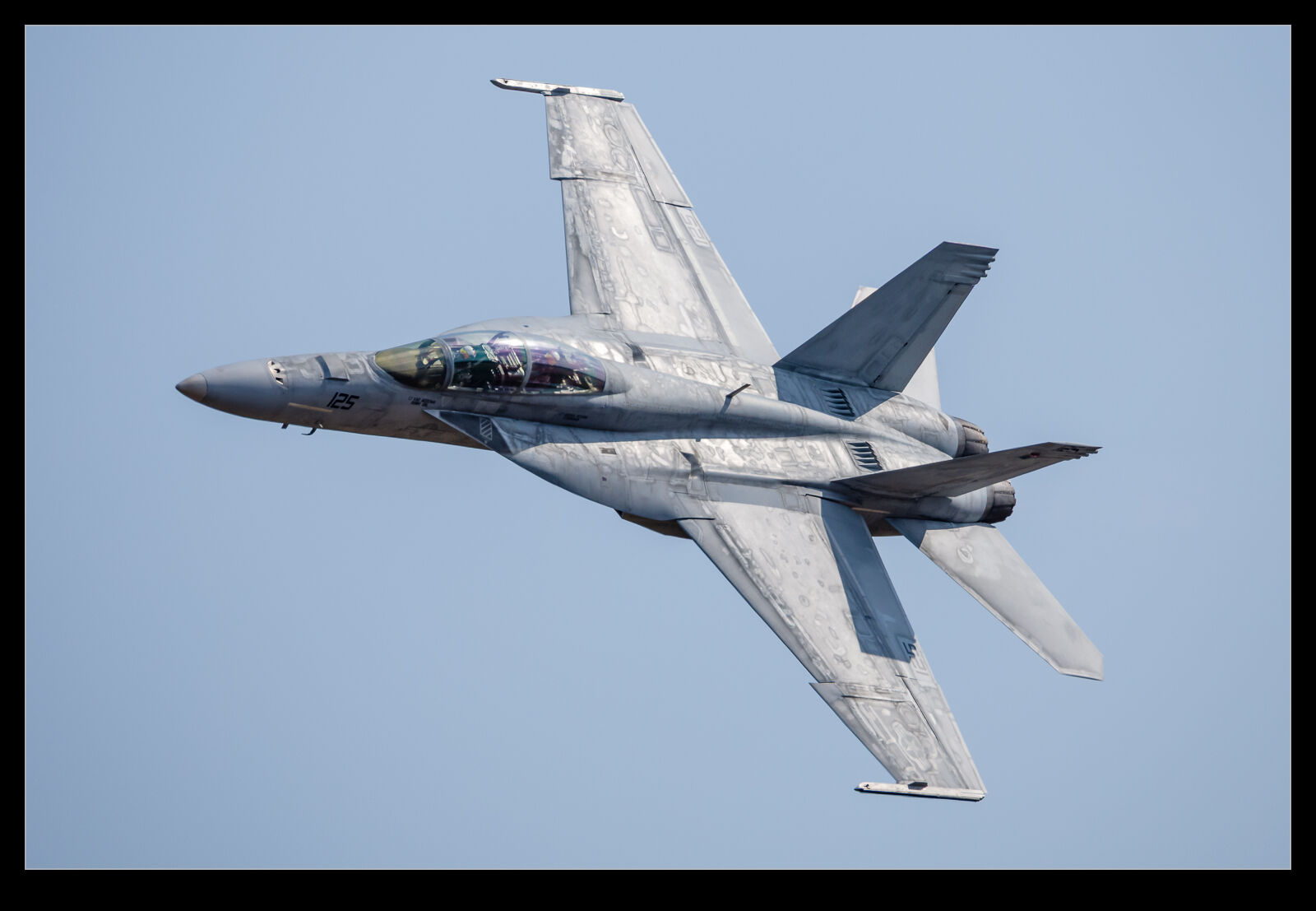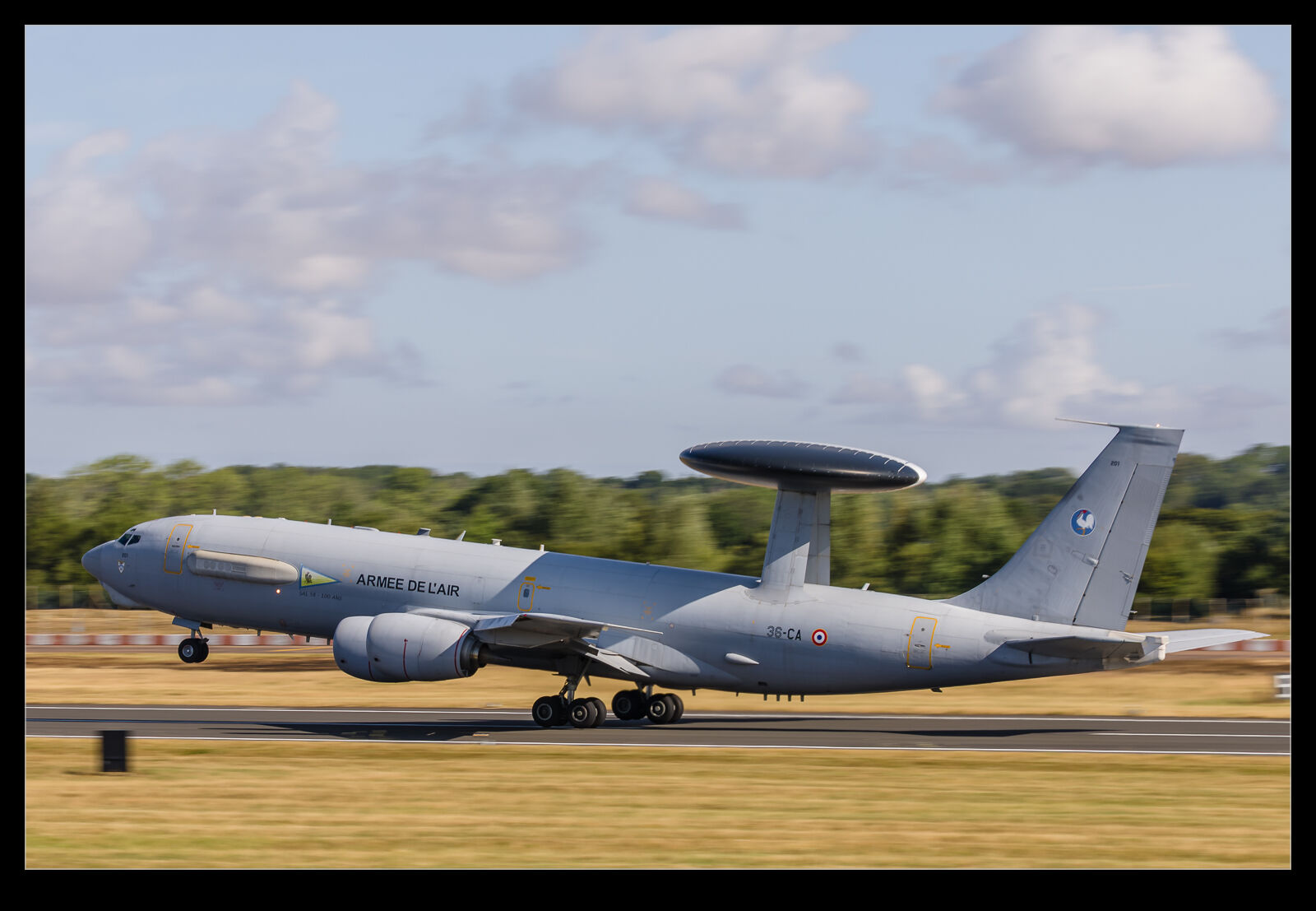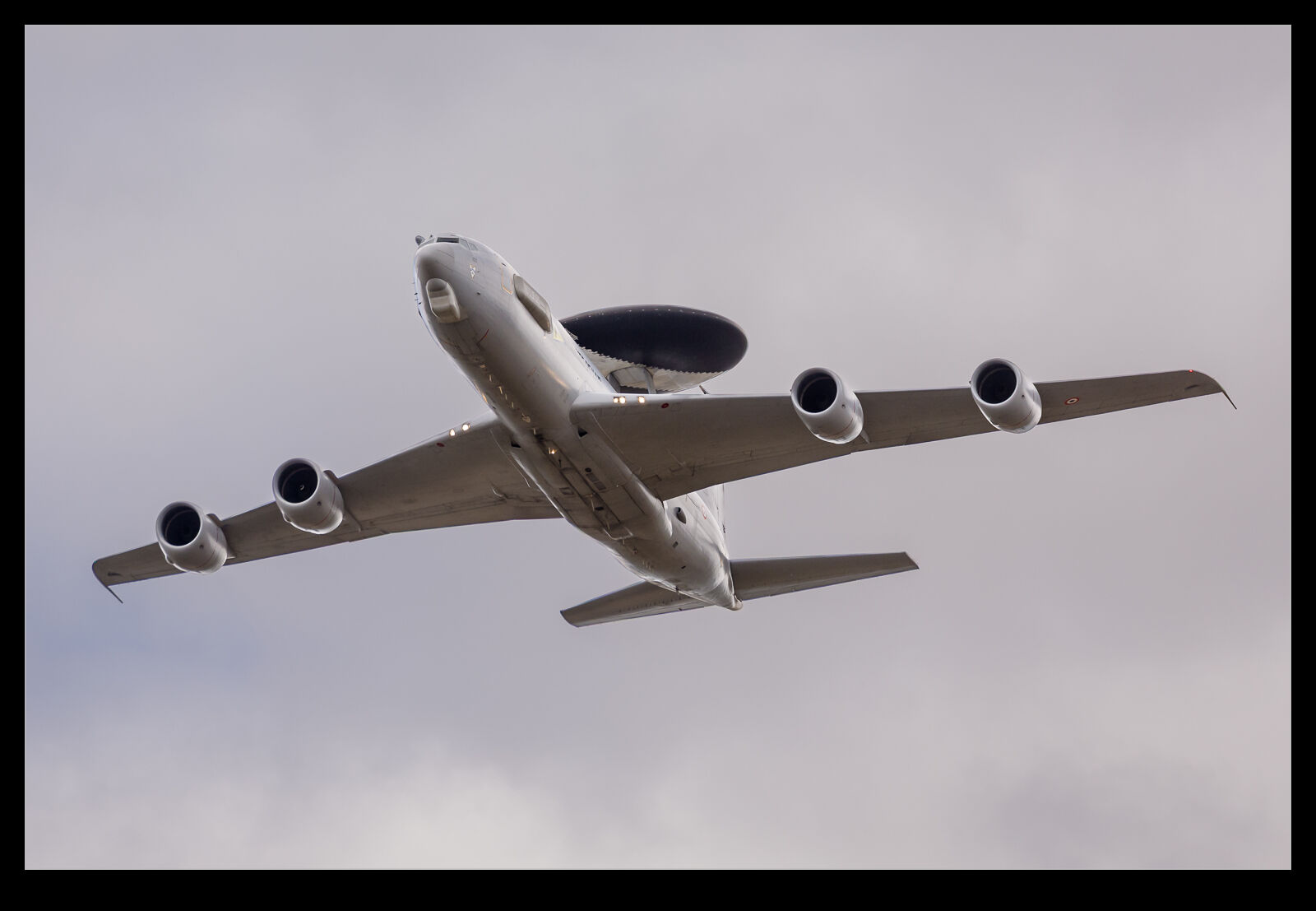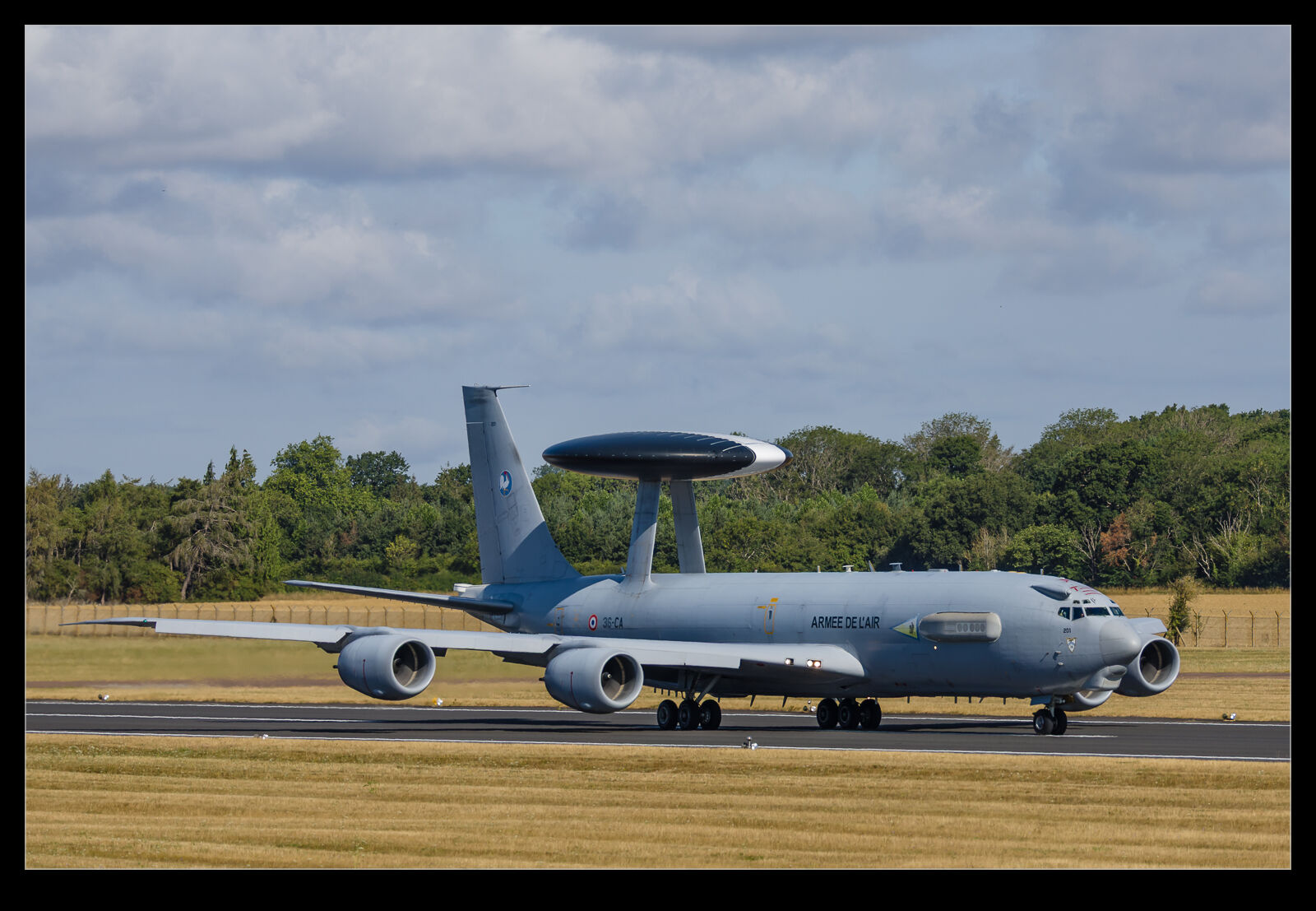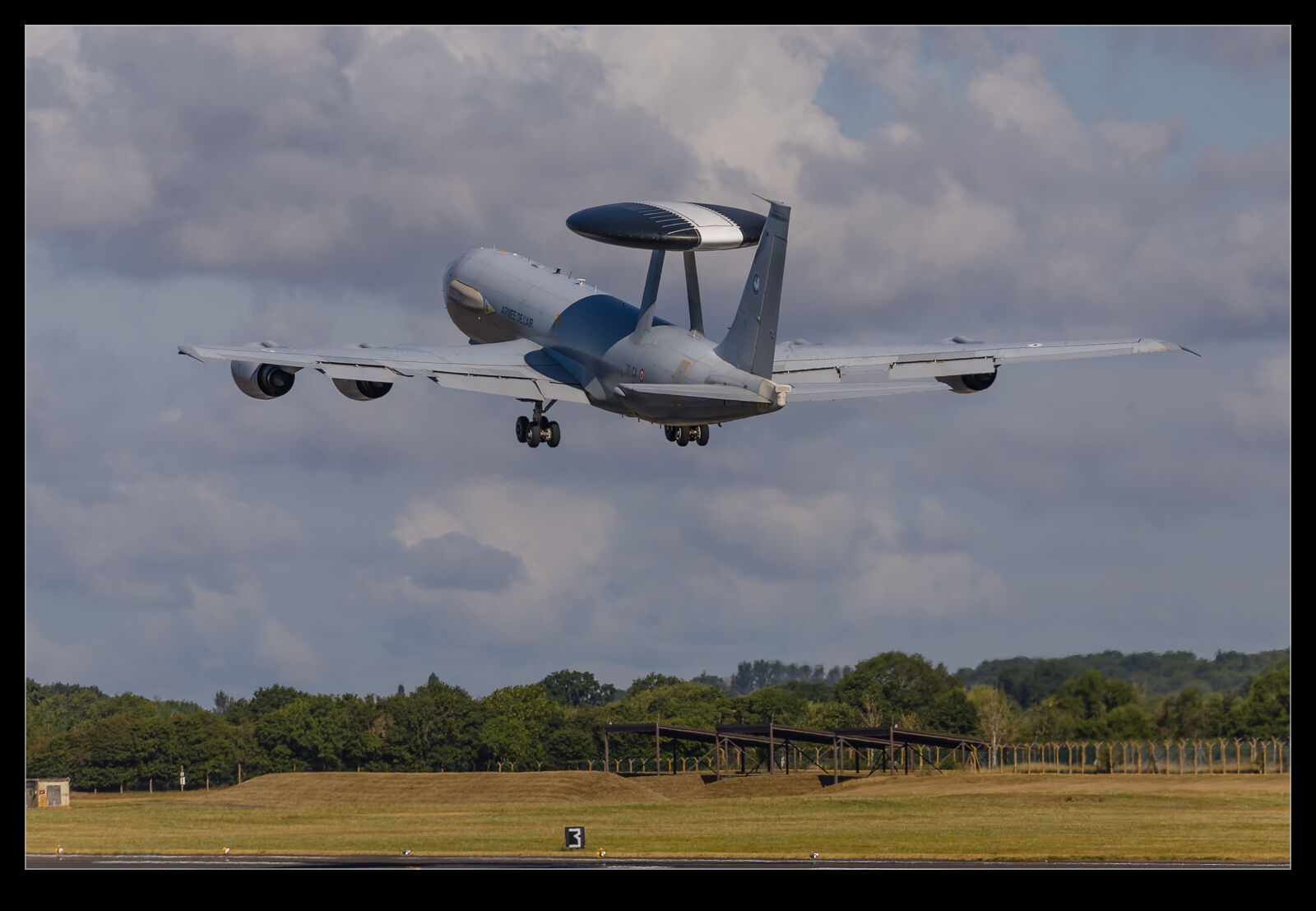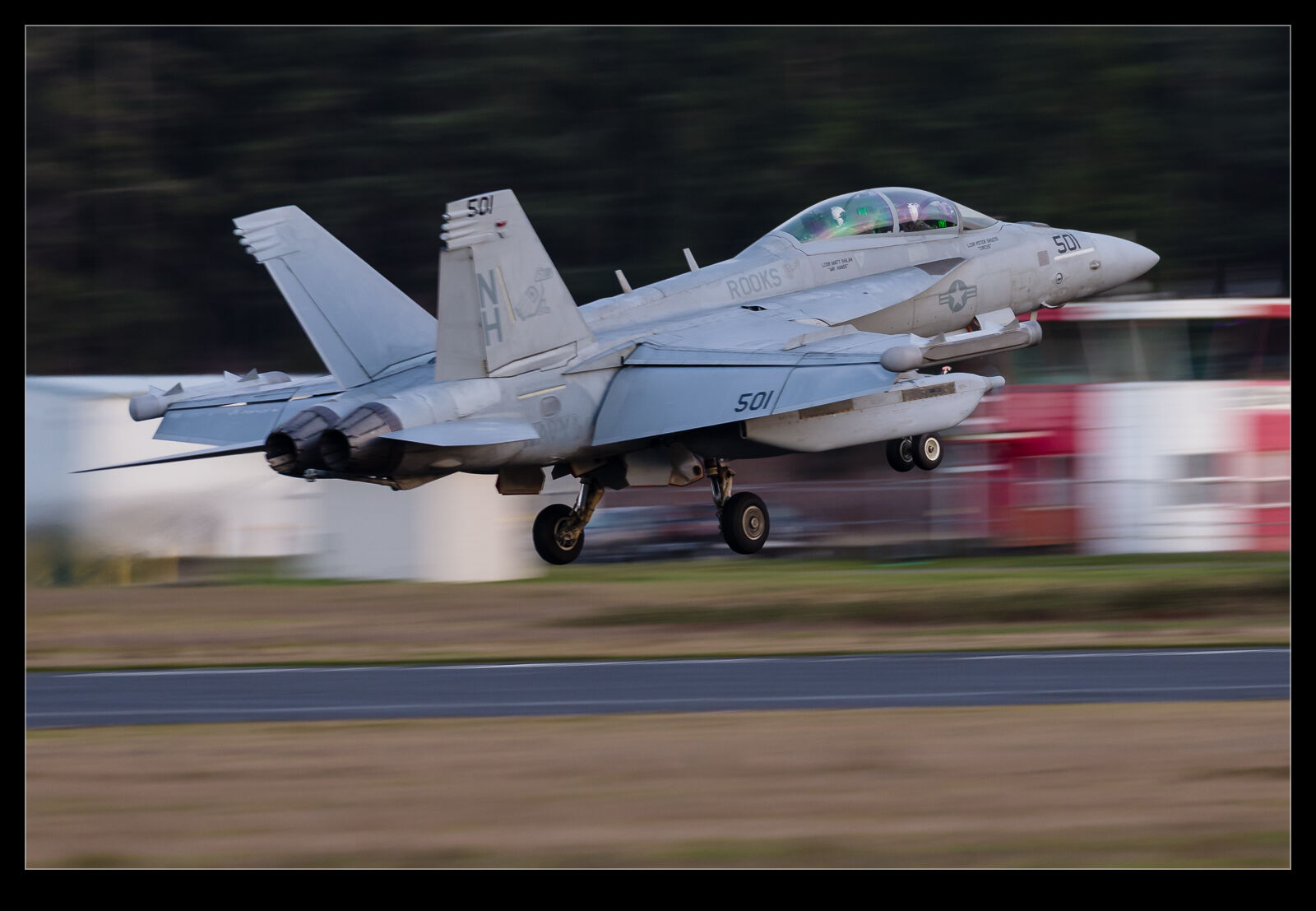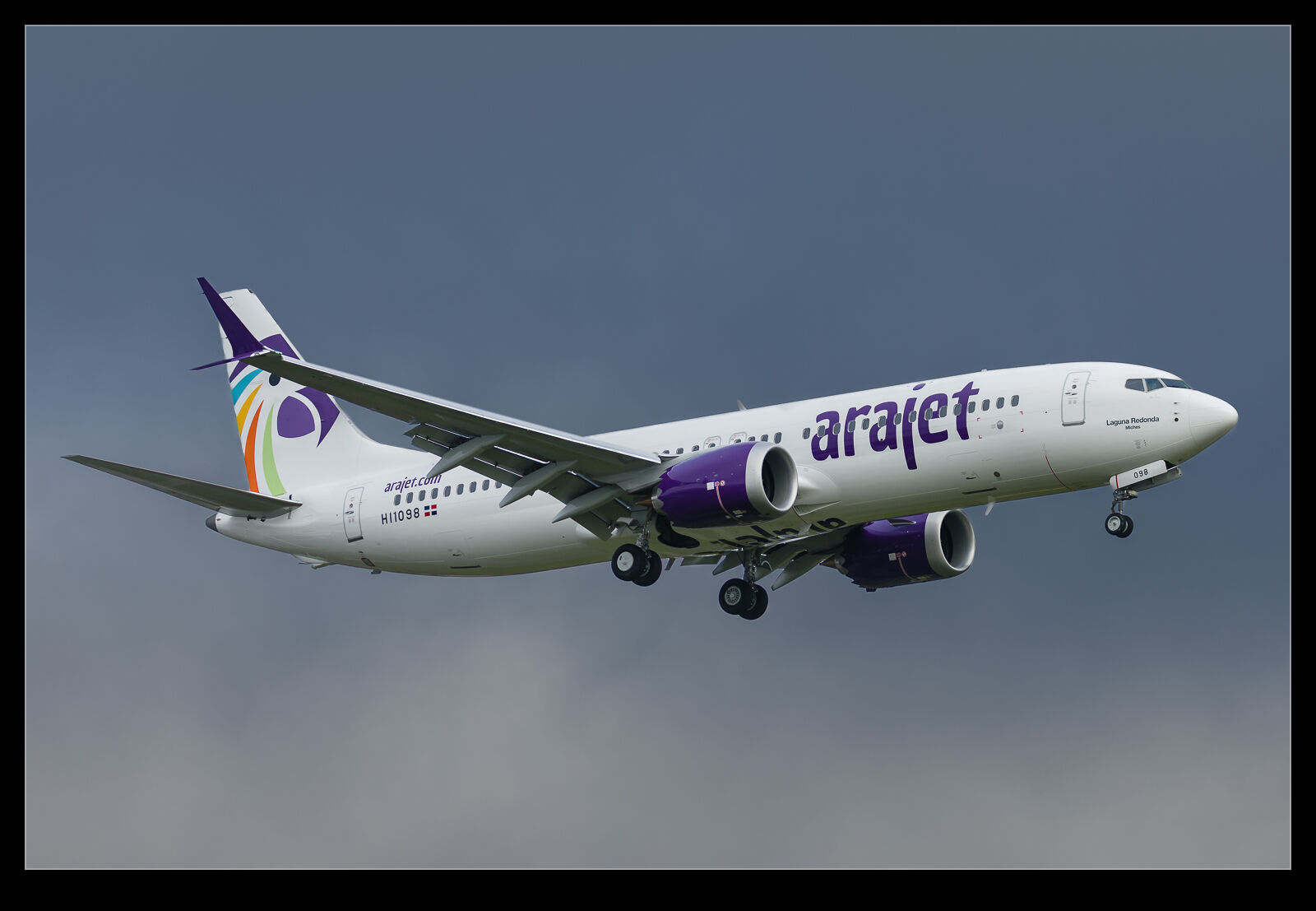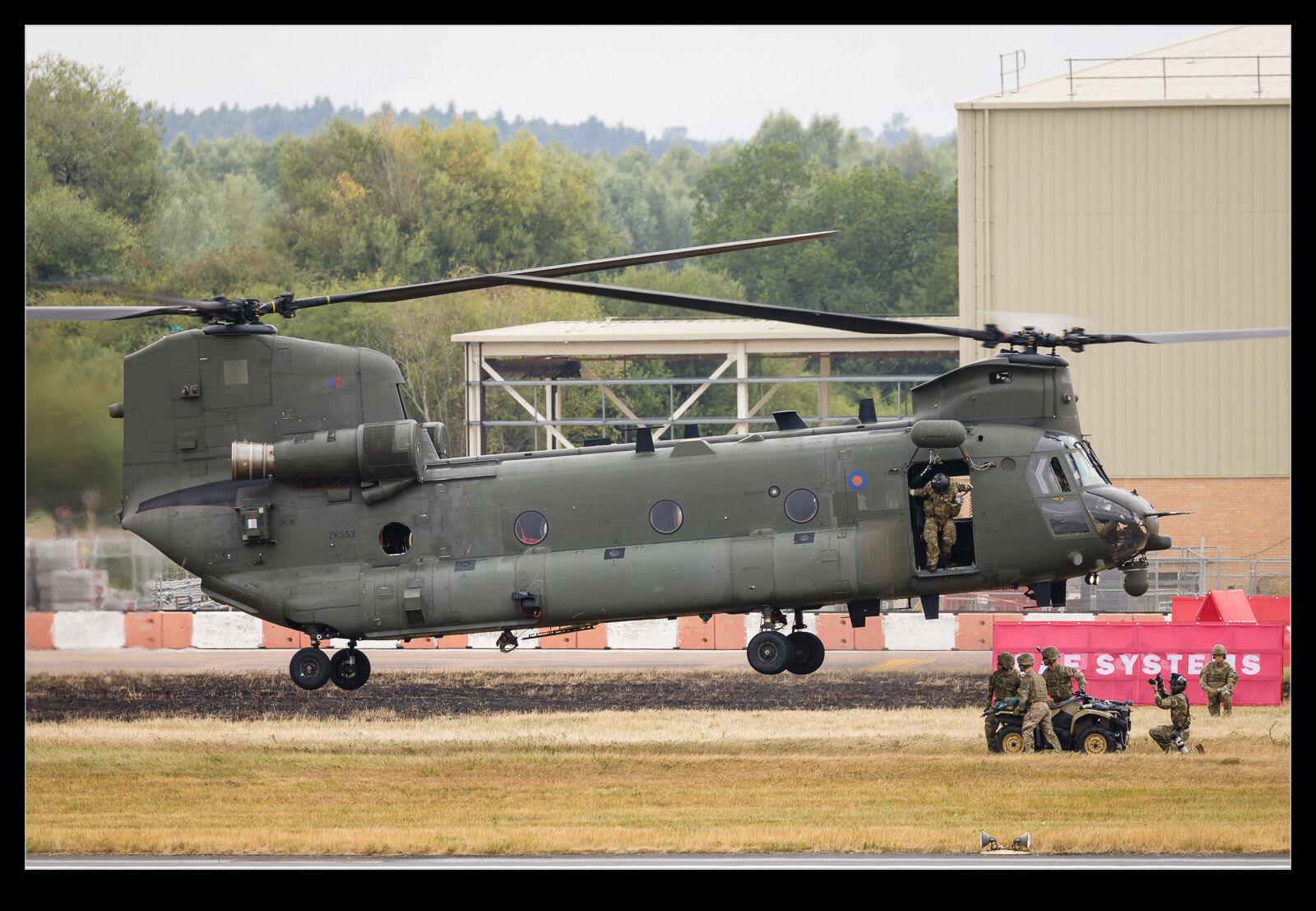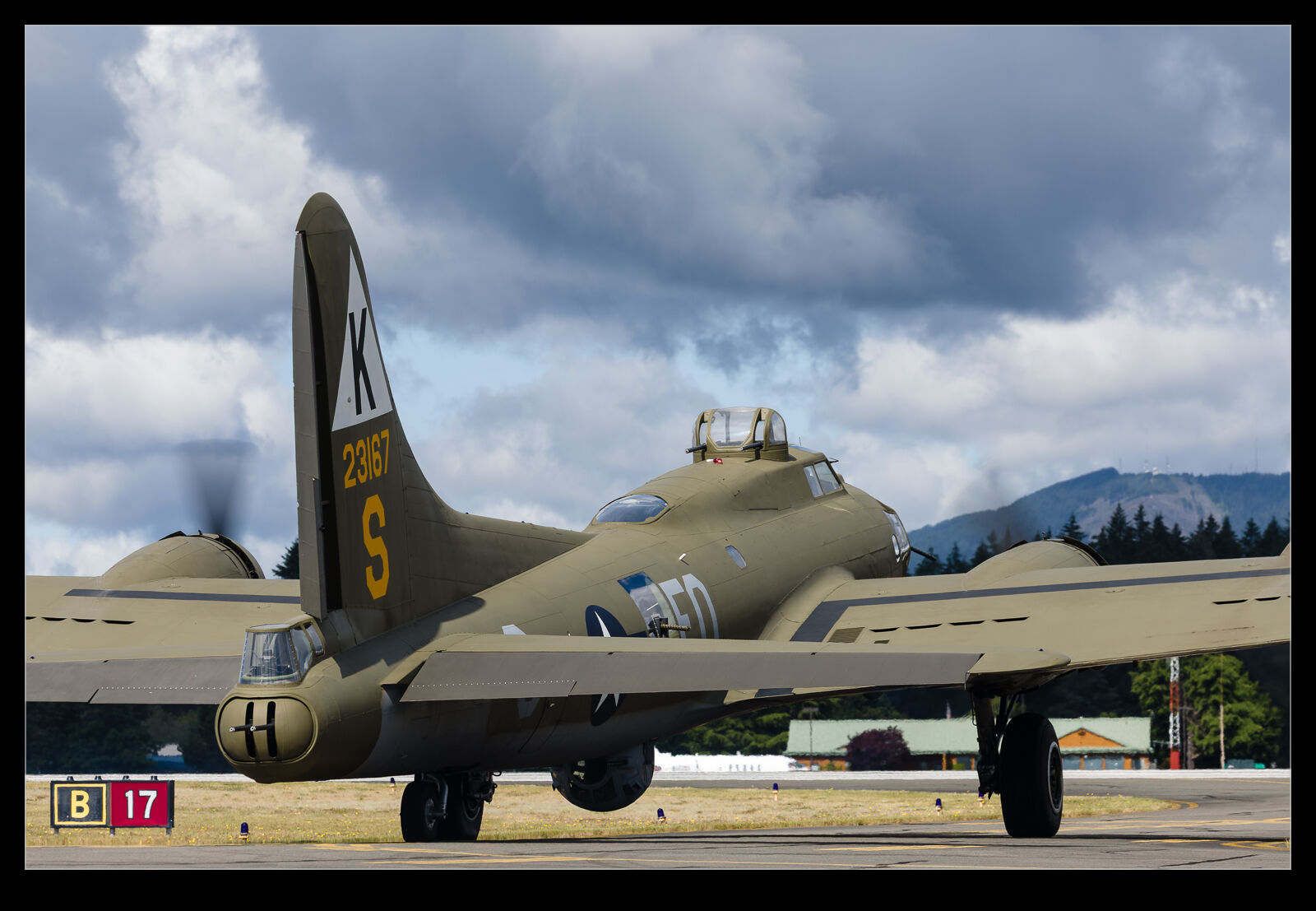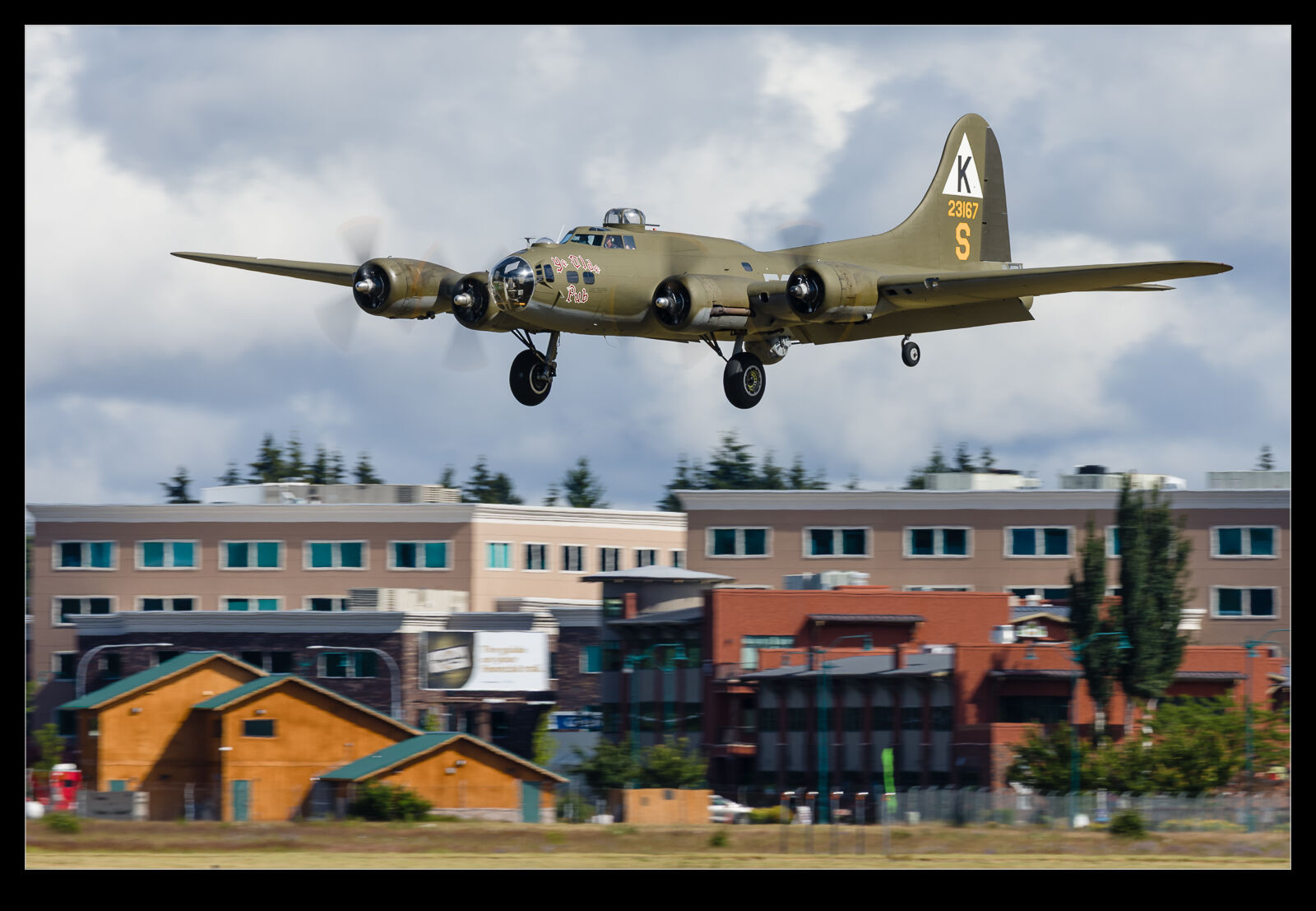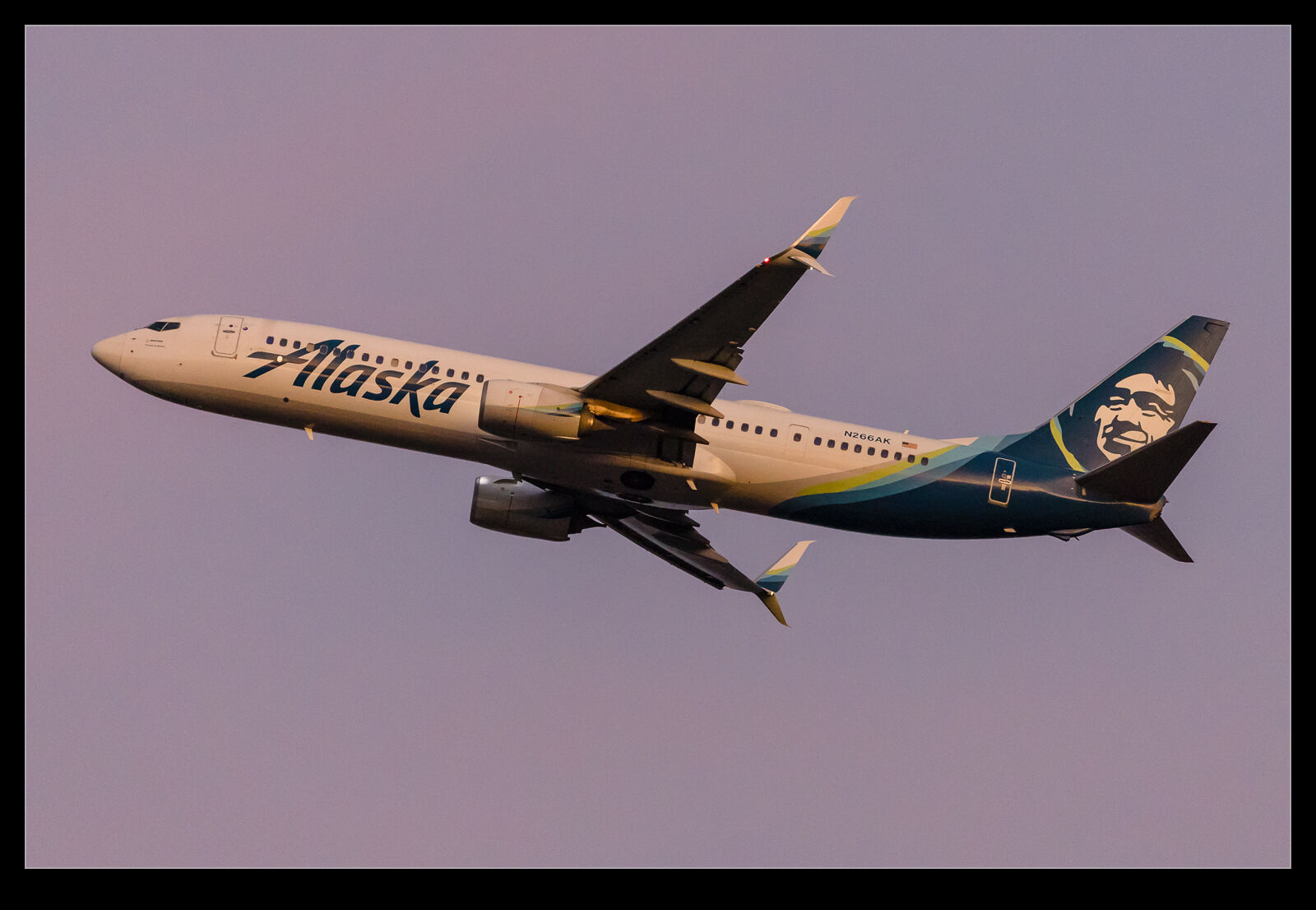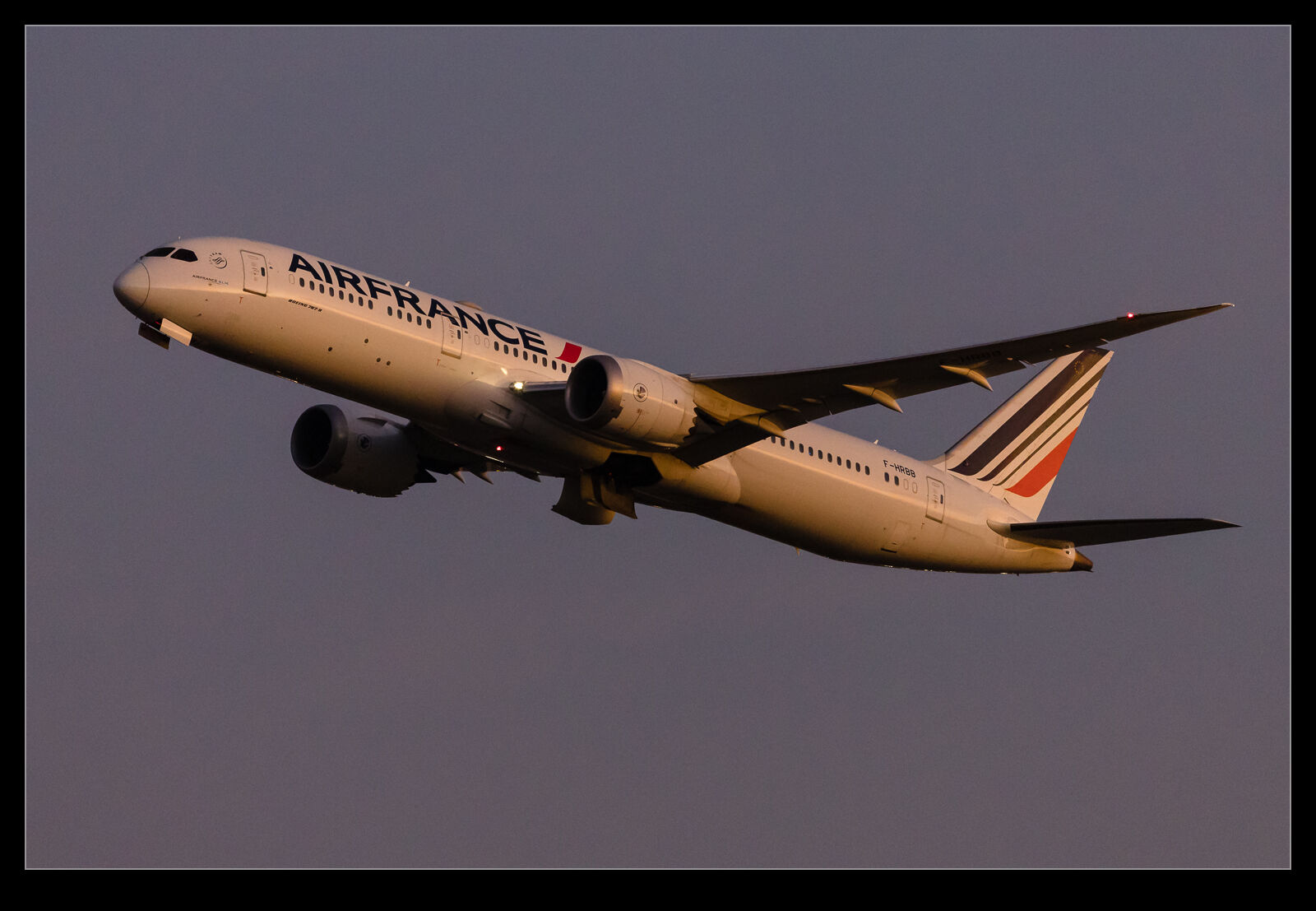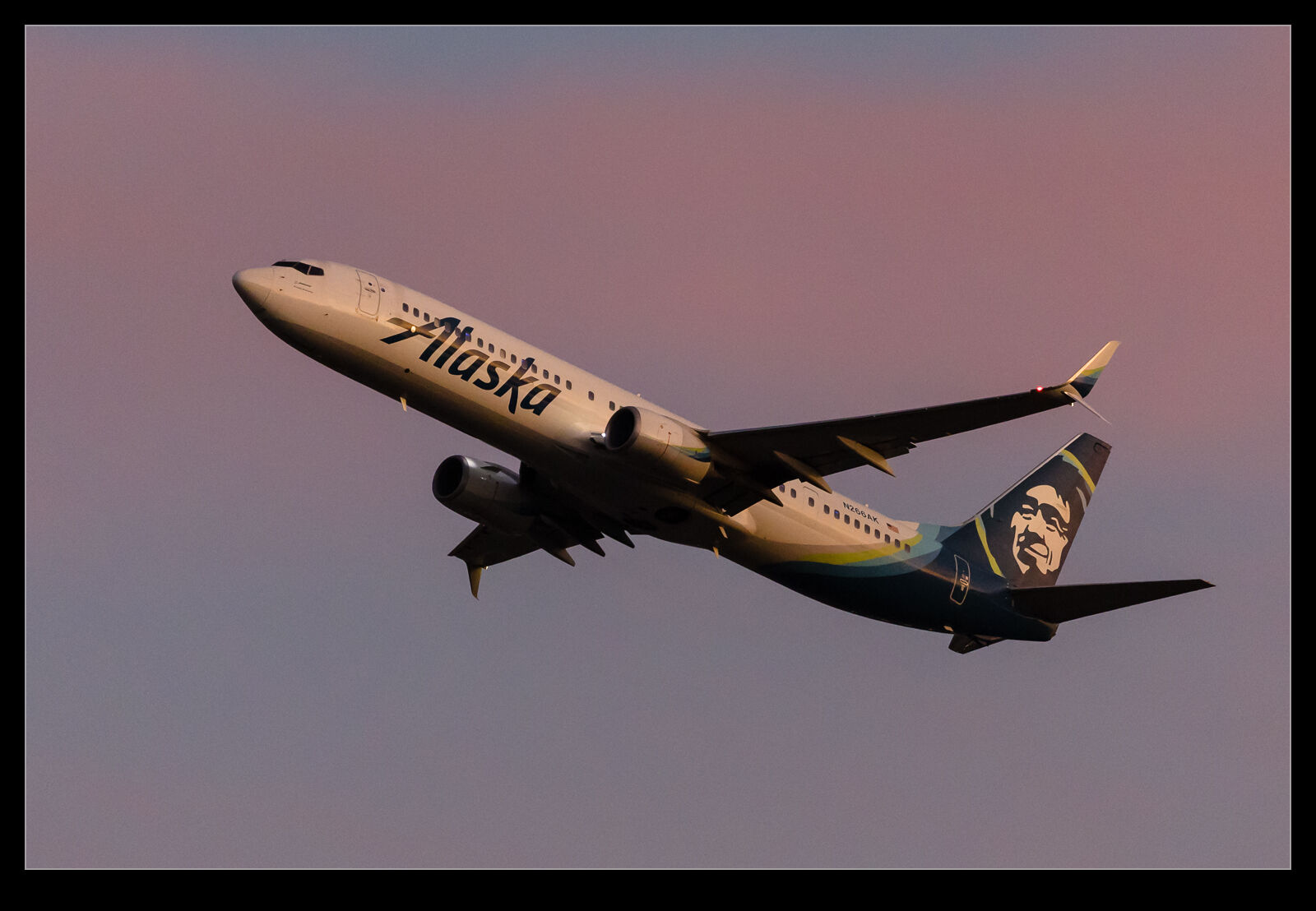 We had an excellent time walking through Windsor Great Park and, while I wasn’t there chasing aircraft, there were a few opportunities to get images of some of the arrivals into Heathrow in the distance. One of these was an Azerbaijan Boeing 777. I grabbed a couple of shots of it as it came over Windsor in the distance and then thought nothing further about it. However, when I started to look through my shots, I noticed some interesting lumps and bumps on the fuselage. My thoughts were immediately that they were some form of defensive countermeasures but if anyone has any other thoughts, I’d be interested to hear them.
We had an excellent time walking through Windsor Great Park and, while I wasn’t there chasing aircraft, there were a few opportunities to get images of some of the arrivals into Heathrow in the distance. One of these was an Azerbaijan Boeing 777. I grabbed a couple of shots of it as it came over Windsor in the distance and then thought nothing further about it. However, when I started to look through my shots, I noticed some interesting lumps and bumps on the fuselage. My thoughts were immediately that they were some form of defensive countermeasures but if anyone has any other thoughts, I’d be interested to hear them.
Tag Archives: Boeing
Taking a Chance With the T-38 Landing
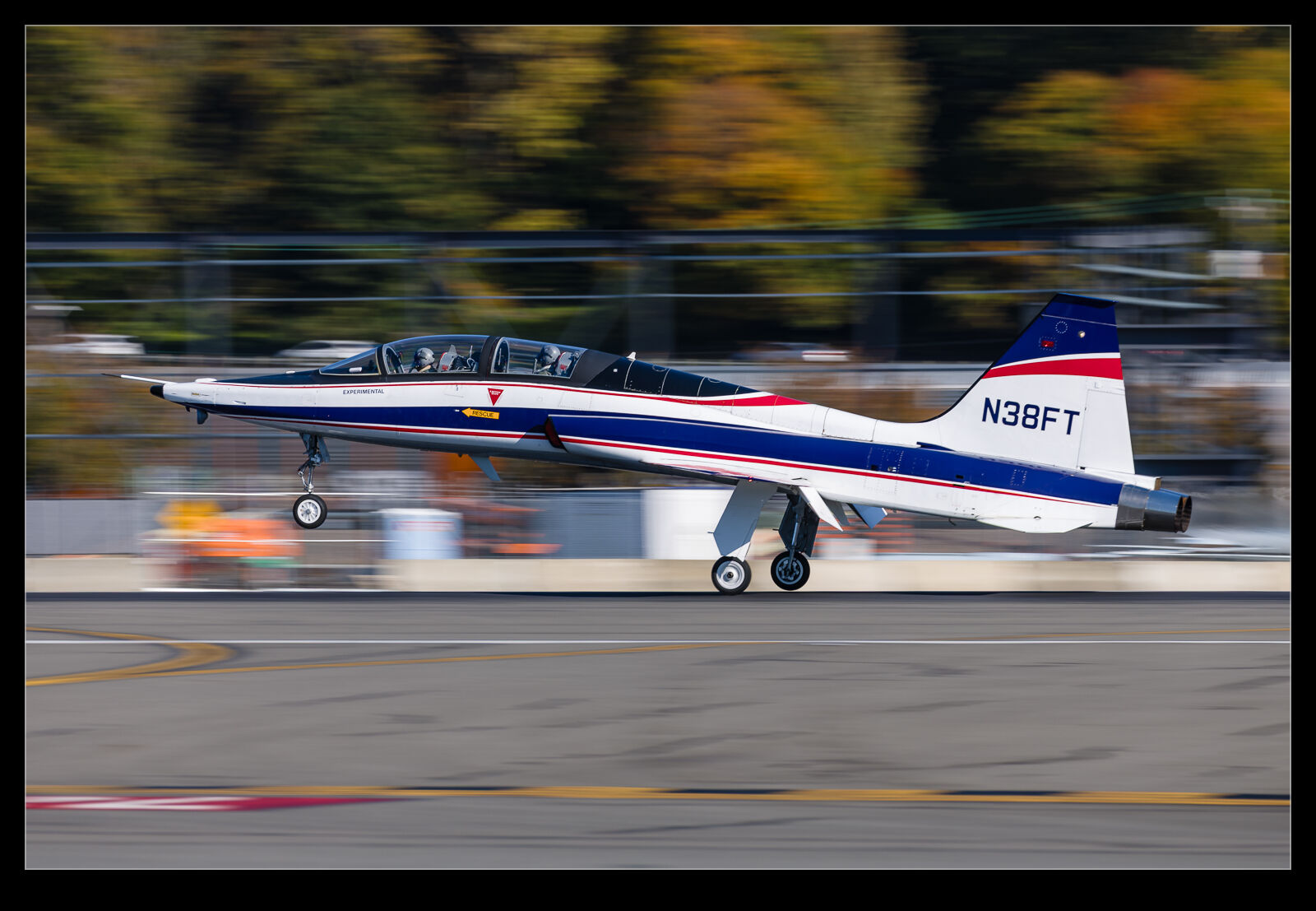 The T-38 chase planes that Boeing operates from Boeing Field did not fly as often as I would have liked. I’m sure they got plenty of use out of them, but it seemed to be a lucky break if one was up – particularly if I was in any place to see them. Consequently, I was always wondering whether I should make sure to get a sharp shot or take a chance on getting a more interesting look to the image. On this occasion, I decided to go with the latter. I dropped the shutter speed down to 1/100th of a second and hoped. A few came out okay. The cluttered background at Boeing Field is always a problem so a bit of blur helps put the focus on the plane.
The T-38 chase planes that Boeing operates from Boeing Field did not fly as often as I would have liked. I’m sure they got plenty of use out of them, but it seemed to be a lucky break if one was up – particularly if I was in any place to see them. Consequently, I was always wondering whether I should make sure to get a sharp shot or take a chance on getting a more interesting look to the image. On this occasion, I decided to go with the latter. I dropped the shutter speed down to 1/100th of a second and hoped. A few came out okay. The cluttered background at Boeing Field is always a problem so a bit of blur helps put the focus on the plane.
Super Bugs at Bremerton
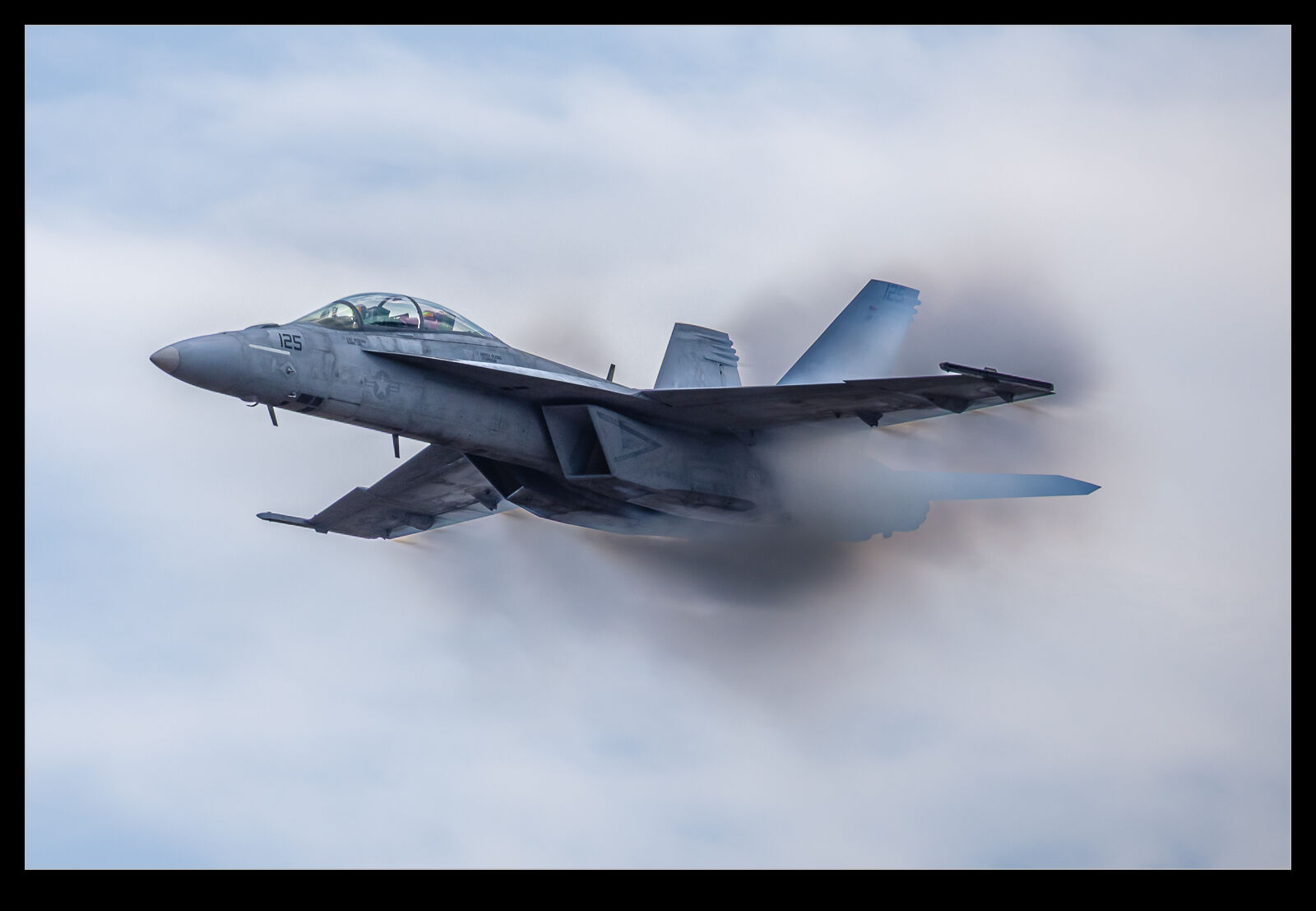 One of the last air shows I attended before we left the Pacific Northwest was at Bremerton. The unusual thing about this air show was that I didn’t head there alone. Instead, Nancy came along with me. It is a long time since she last came to a show with me, but the good news was that she enjoyed it! One of the parts of the show that she found the best was the US Navy’s Super Hornet display. They ripped up the sky for a while. Their blast across the field from crowd rear particularly amused her!
One of the last air shows I attended before we left the Pacific Northwest was at Bremerton. The unusual thing about this air show was that I didn’t head there alone. Instead, Nancy came along with me. It is a long time since she last came to a show with me, but the good news was that she enjoyed it! One of the parts of the show that she found the best was the US Navy’s Super Hornet display. They ripped up the sky for a while. Their blast across the field from crowd rear particularly amused her!
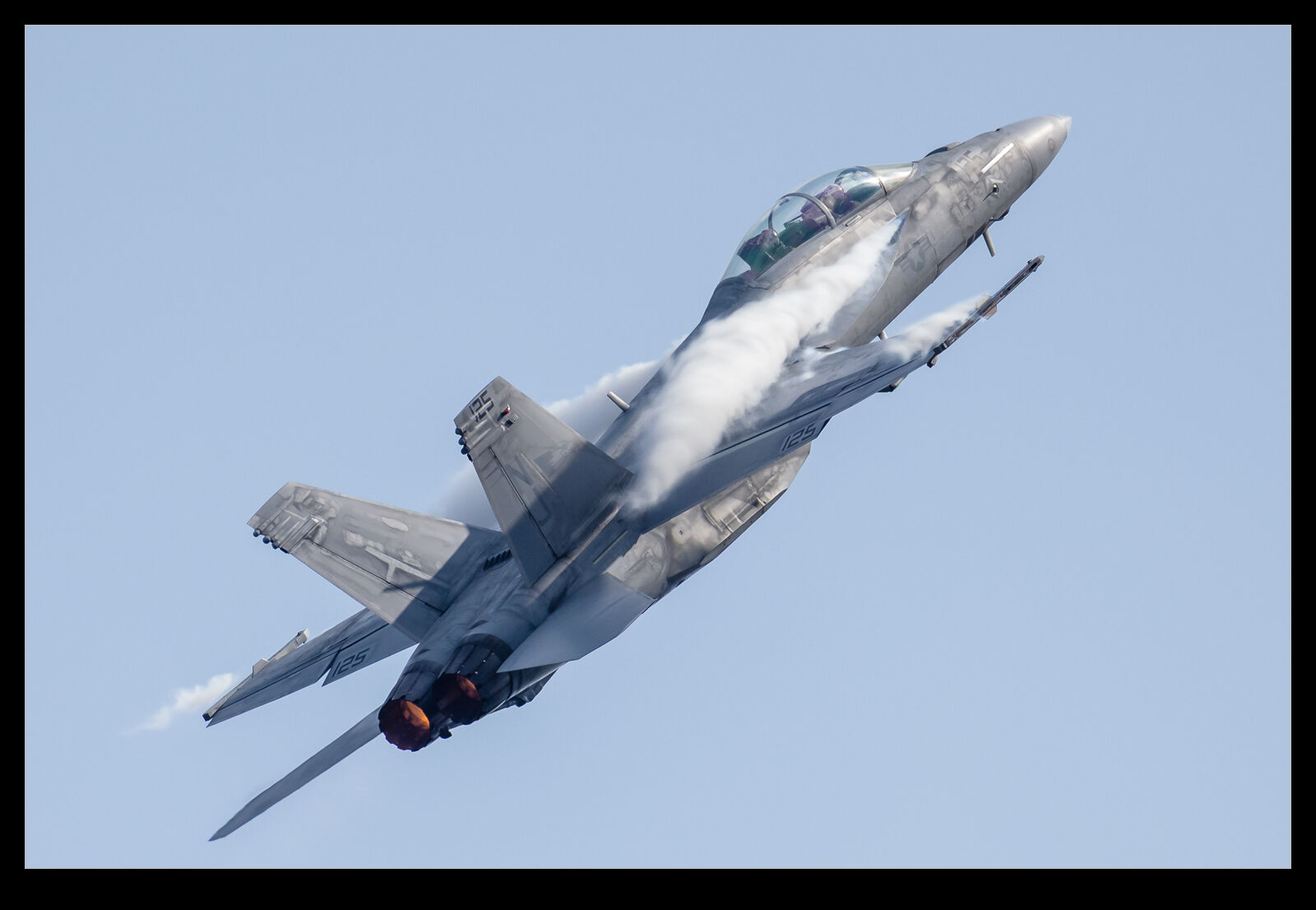 The conditions not ideal from a lighting point of view but there was humidity in the air with the upside that the jet was created plenty of spluff. One of the passes in particular created a lot of cloud activity. It made for a difficult image to process given the contrast with the cloudy background and that its own clouds needed not to be over exposed. I suspect I shall probably try reprocessing this again in the future as either my techniques improve, or the software gets more advanced. I did have a bit too much lens for the closest part of the pass – oh well…
The conditions not ideal from a lighting point of view but there was humidity in the air with the upside that the jet was created plenty of spluff. One of the passes in particular created a lot of cloud activity. It made for a difficult image to process given the contrast with the cloudy background and that its own clouds needed not to be over exposed. I suspect I shall probably try reprocessing this again in the future as either my techniques improve, or the software gets more advanced. I did have a bit too much lens for the closest part of the pass – oh well…
Stormy Sunday Atlas 777F
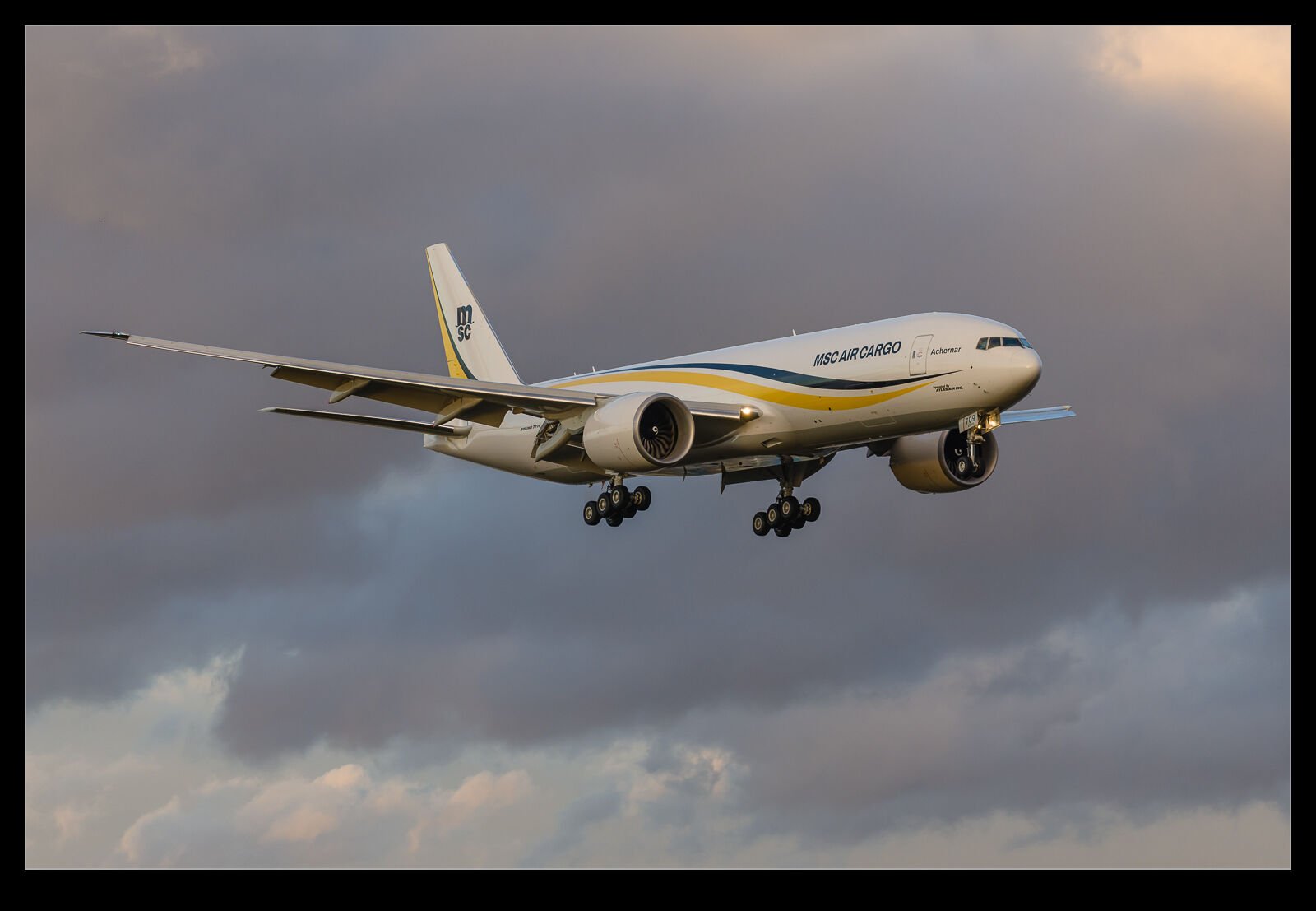 A stormy sky doesn’t immediately inspire you when going for some aircraft photography but, if the light on the subject can end up being okay, a dark background can suddenly seem like a great option. One Sunday an Atlas 777F was up on test at Paine Field. The sky was dark and gloomy but not a solid cloud background. Instead, the clouds were stratified so there was more detail and texture to see.
A stormy sky doesn’t immediately inspire you when going for some aircraft photography but, if the light on the subject can end up being okay, a dark background can suddenly seem like a great option. One Sunday an Atlas 777F was up on test at Paine Field. The sky was dark and gloomy but not a solid cloud background. Instead, the clouds were stratified so there was more detail and texture to see.
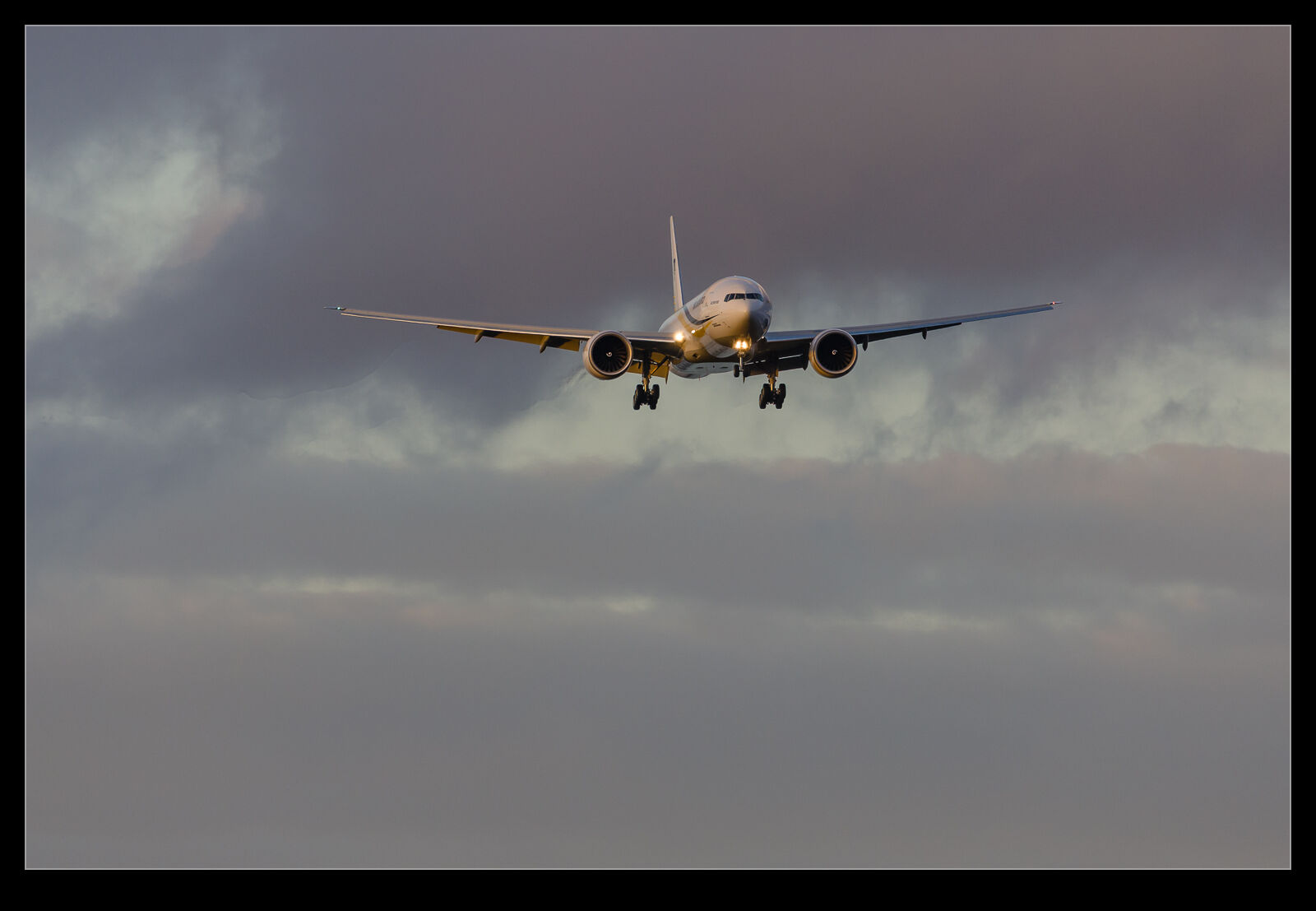 As the 777 came down the approach, it was not brightly illuminated but it was picking up a good amount of light compared to what I had expected to be the case. This did require some thought about the camera settings. When the sky is dark, I often significantly over-expose. This is because the clouds will dominate the metering response and the subject – which is usually quite dark – really disappears. In post processing I can then bring the exposure back down but there is sufficient light on the subject to get a good image of it against the sky.
As the 777 came down the approach, it was not brightly illuminated but it was picking up a good amount of light compared to what I had expected to be the case. This did require some thought about the camera settings. When the sky is dark, I often significantly over-expose. This is because the clouds will dominate the metering response and the subject – which is usually quite dark – really disappears. In post processing I can then bring the exposure back down but there is sufficient light on the subject to get a good image of it against the sky.
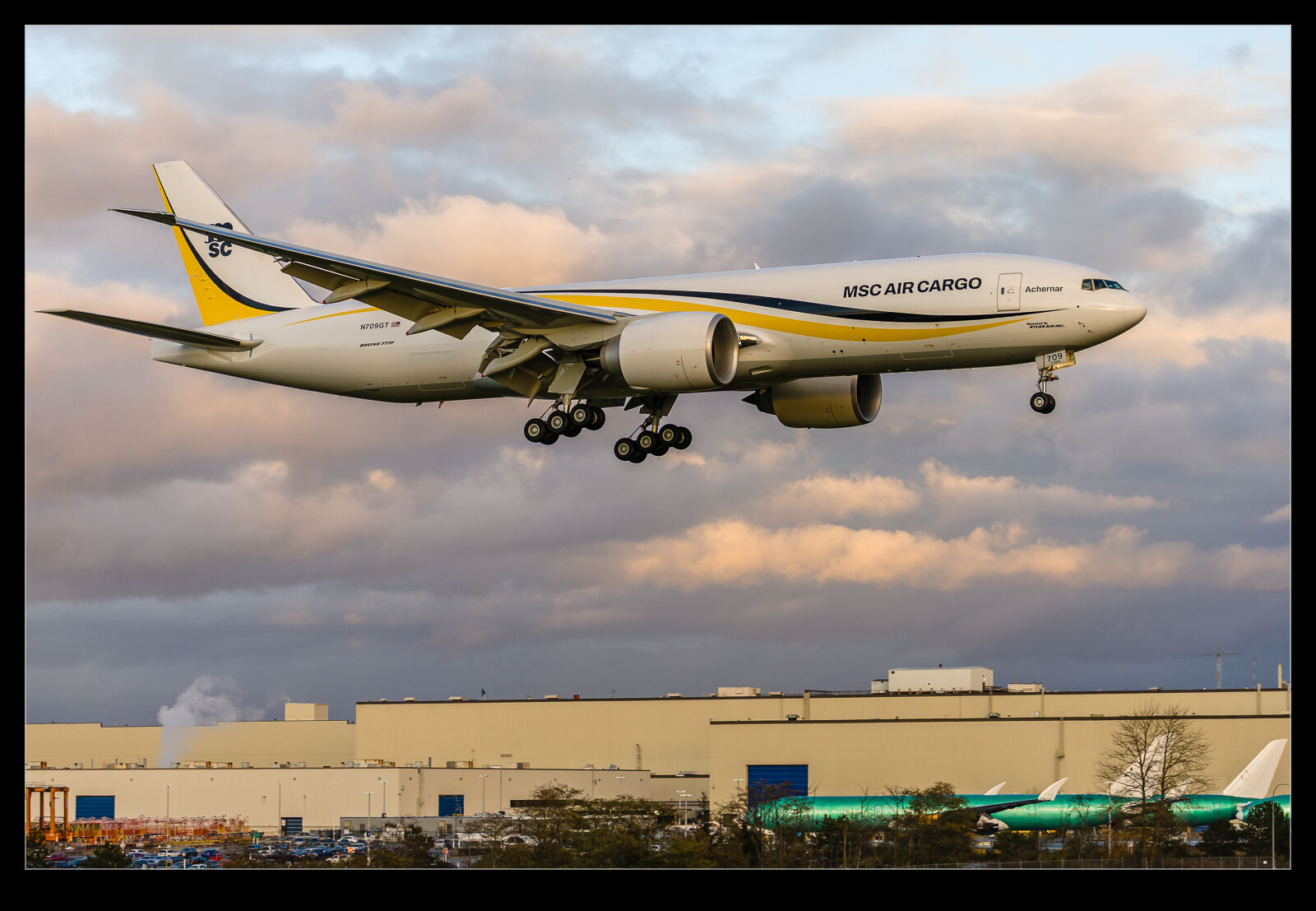 In this case, I had to be more careful. With good light on the subject, the dark sky would result in blowing out the plane. Therefore, I had to keep the exposure compensation off to allow the subject to not get too overexposed and not leave enough latitude for processing it to where I wanted it to be. The results came out okay. This was more important for the longer shots. Once the plane was close in, it started to dominate the metering response and, once on the ground, the illumination was more balanced.
In this case, I had to be more careful. With good light on the subject, the dark sky would result in blowing out the plane. Therefore, I had to keep the exposure compensation off to allow the subject to not get too overexposed and not leave enough latitude for processing it to where I wanted it to be. The results came out okay. This was more important for the longer shots. Once the plane was close in, it started to dominate the metering response and, once on the ground, the illumination was more balanced.
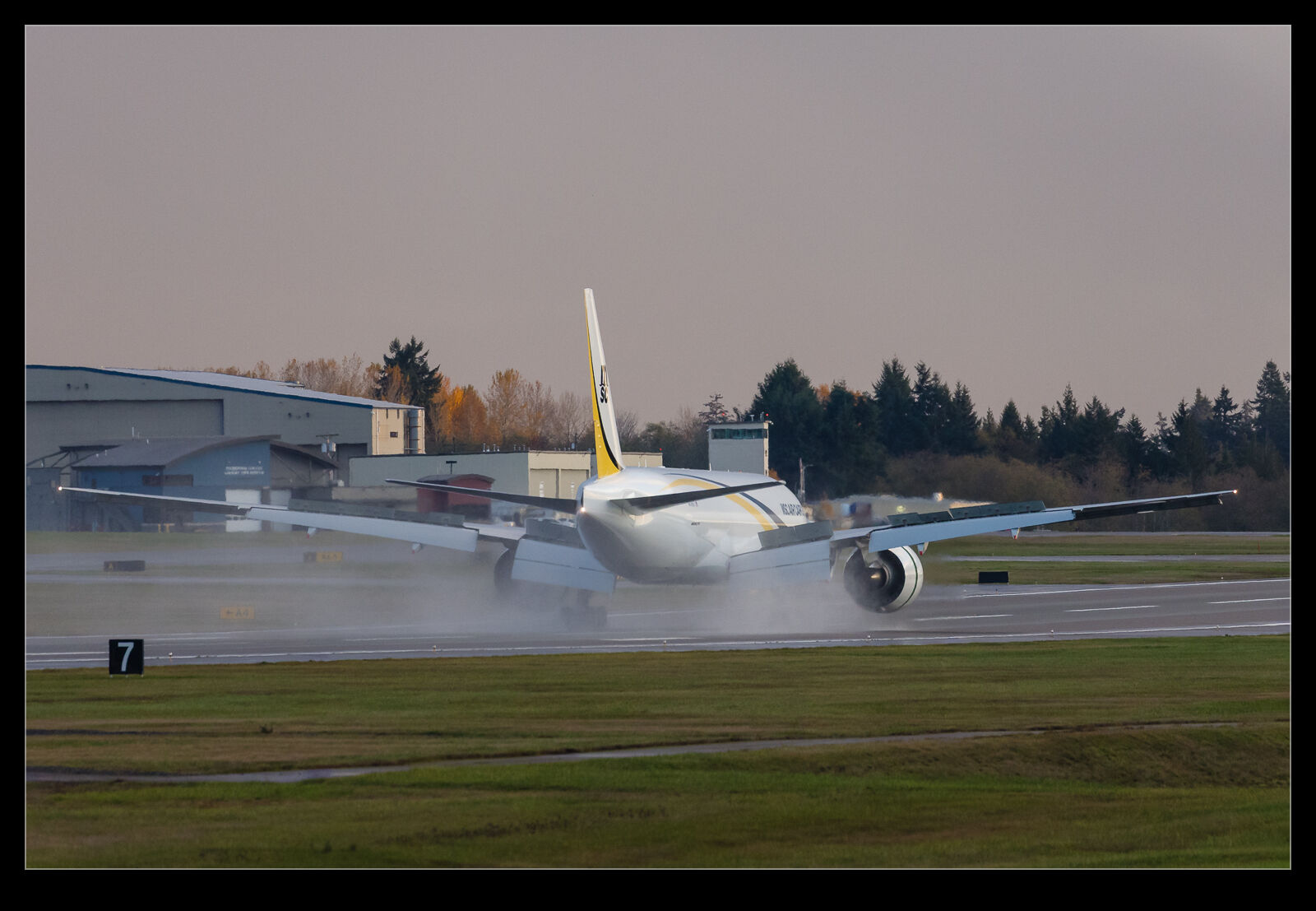 Once they touched down and brought in the reversers, you could see that the conditions had not long ago been wet as the runway still had plenty of water on the surface and the reversers kicked it up in the air.
Once they touched down and brought in the reversers, you could see that the conditions had not long ago been wet as the runway still had plenty of water on the surface and the reversers kicked it up in the air.
An E-3F For the First Time for Me
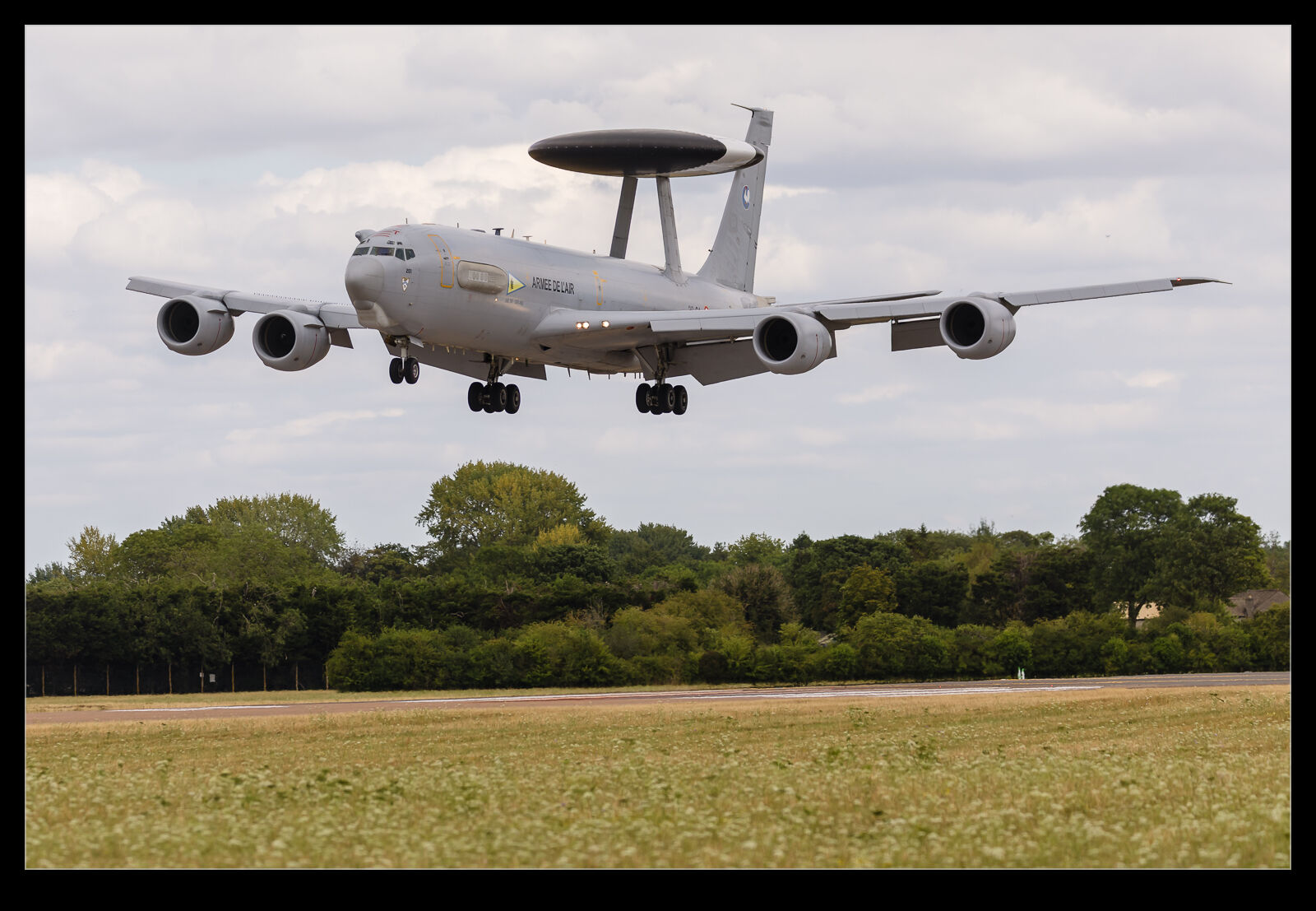 The early 90s had both the RAF and the French Air Force buying new airborne early warning aircraft in the form of the E-3. Unlike the USAF and NATO jets, these included the upgrade to the CFM56 engines which improved endurance and performance. I saw the RAF’s jets on many occasions but never encountered a French jet until this year – after the RAF jets have been retired and not long before the French ones follow suit. I’m not sure how much longer they have but seeing one arriving and departing the show was a nice result. I was pretty happy that I happened to be at the arrival end when it came in which was a bonus.
The early 90s had both the RAF and the French Air Force buying new airborne early warning aircraft in the form of the E-3. Unlike the USAF and NATO jets, these included the upgrade to the CFM56 engines which improved endurance and performance. I saw the RAF’s jets on many occasions but never encountered a French jet until this year – after the RAF jets have been retired and not long before the French ones follow suit. I’m not sure how much longer they have but seeing one arriving and departing the show was a nice result. I was pretty happy that I happened to be at the arrival end when it came in which was a bonus.
The Gloomy Conditions Make the Cockpit Displays Visible
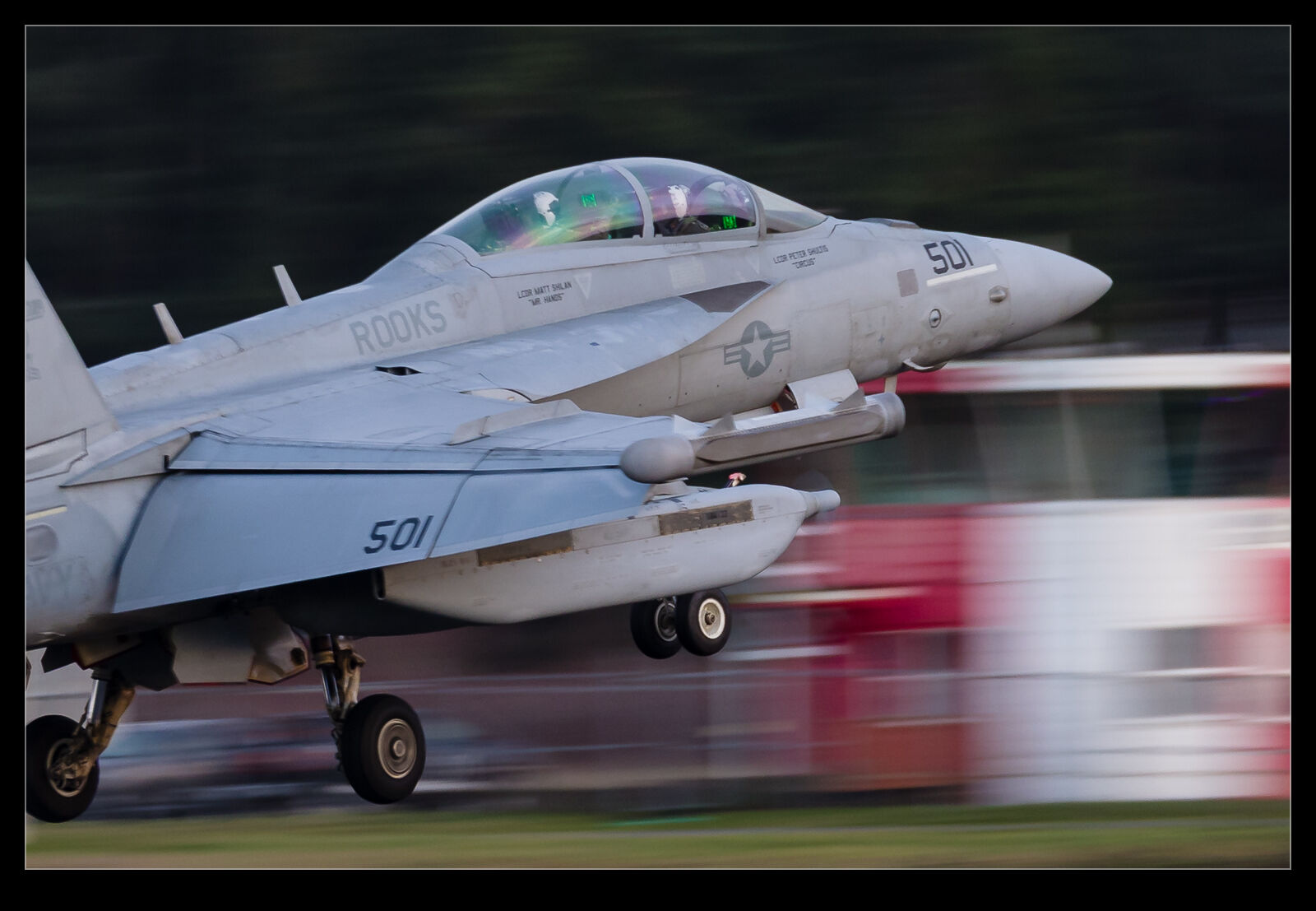 Back on one of my last visits to Coupeville to watch the Growlers undertaking FCLP, the weather was not playing ball and things ended up getting quite gloomy at the end of the slots they had planned. With a modern camera, this is not really an issue as you can handle some really low light without too much compromise. However, the thing I did notice as I was going through the images was that the green colours of the cockpit displays really start to show up. In some of the earlier shots, the light in the sky was reflecting off the canopy which washed it out a touch but by the last few passes, the green was really showing up.
Back on one of my last visits to Coupeville to watch the Growlers undertaking FCLP, the weather was not playing ball and things ended up getting quite gloomy at the end of the slots they had planned. With a modern camera, this is not really an issue as you can handle some really low light without too much compromise. However, the thing I did notice as I was going through the images was that the green colours of the cockpit displays really start to show up. In some of the earlier shots, the light in the sky was reflecting off the canopy which washed it out a touch but by the last few passes, the green was really showing up.
Arajet But Without the Paint
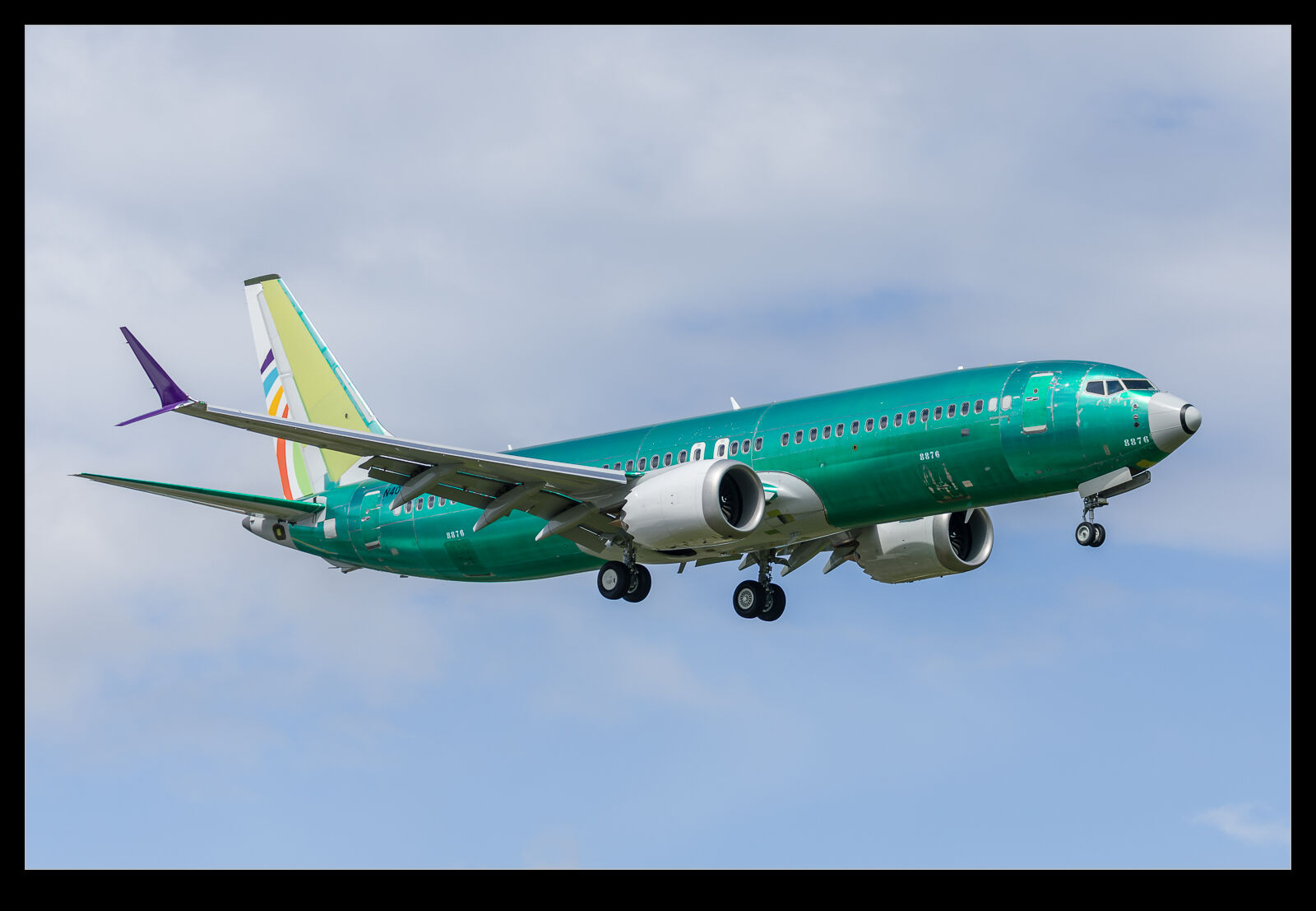 Having Boeing on your doorstep means the chance to photograph airlines that you have a good chance of never seeing in their normal operations. Arajet, of the Dominican Republic, is one such airline. As they were taking delivery of some 737 Max jets, I was able to photograph them. On one occasion, I was out at Boeing Field when one of their jets was on test and I was looking forward to getting a shot. Unfortunately, I didn’t know it hadn’t yet been painted. Instead, I got a green plane with only the rudder and winglets giving away who the ultimate operator would be
Having Boeing on your doorstep means the chance to photograph airlines that you have a good chance of never seeing in their normal operations. Arajet, of the Dominican Republic, is one such airline. As they were taking delivery of some 737 Max jets, I was able to photograph them. On one occasion, I was out at Boeing Field when one of their jets was on test and I was looking forward to getting a shot. Unfortunately, I didn’t know it hadn’t yet been painted. Instead, I got a green plane with only the rudder and winglets giving away who the ultimate operator would be
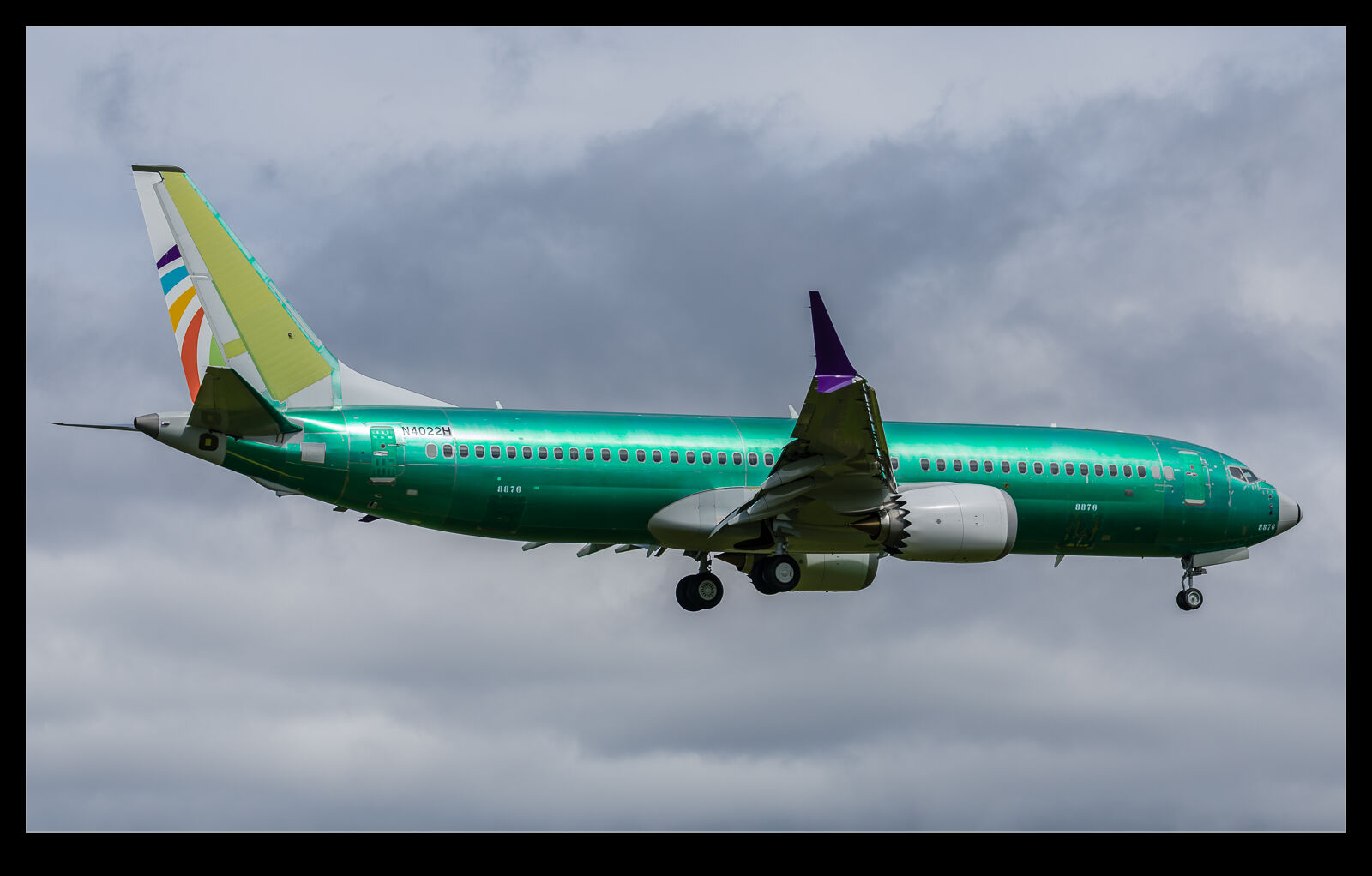 I like the green of the unpainted jets and primer finishes on other planes also look good to me. I wasn’t so upset as a result, but it wasn’t exactly what I was hoping for. Still, it looked pretty good on approach. I did get another airframe in the finished livery so I will stick that at the bottom to show what this one would ultimately look like. Not a dramatic livery but something different.
I like the green of the unpainted jets and primer finishes on other planes also look good to me. I wasn’t so upset as a result, but it wasn’t exactly what I was hoping for. Still, it looked pretty good on approach. I did get another airframe in the finished livery so I will stick that at the bottom to show what this one would ultimately look like. Not a dramatic livery but something different.
Photographing a Photographer Photographing an Air Show Display
 During RIAT, the RAF undertook a role demo with the Chinook. As part of the display, they picked up an underslung load to fly around a bit. The crew under the helicopter were ready to hook on the load and then let out the cables to make sure it was picked up properly. As I watched this happening through a long lens, I realised that they weren’t alone under there. There was a photographer recording their activities. He appeared to have a stills camera and probably a video camera mounted above it. I thought it quite amusing that I was photographing someone photographing the display.
During RIAT, the RAF undertook a role demo with the Chinook. As part of the display, they picked up an underslung load to fly around a bit. The crew under the helicopter were ready to hook on the load and then let out the cables to make sure it was picked up properly. As I watched this happening through a long lens, I realised that they weren’t alone under there. There was a photographer recording their activities. He appeared to have a stills camera and probably a video camera mounted above it. I thought it quite amusing that I was photographing someone photographing the display.
Ye Olde Pub Gets Closer to Home
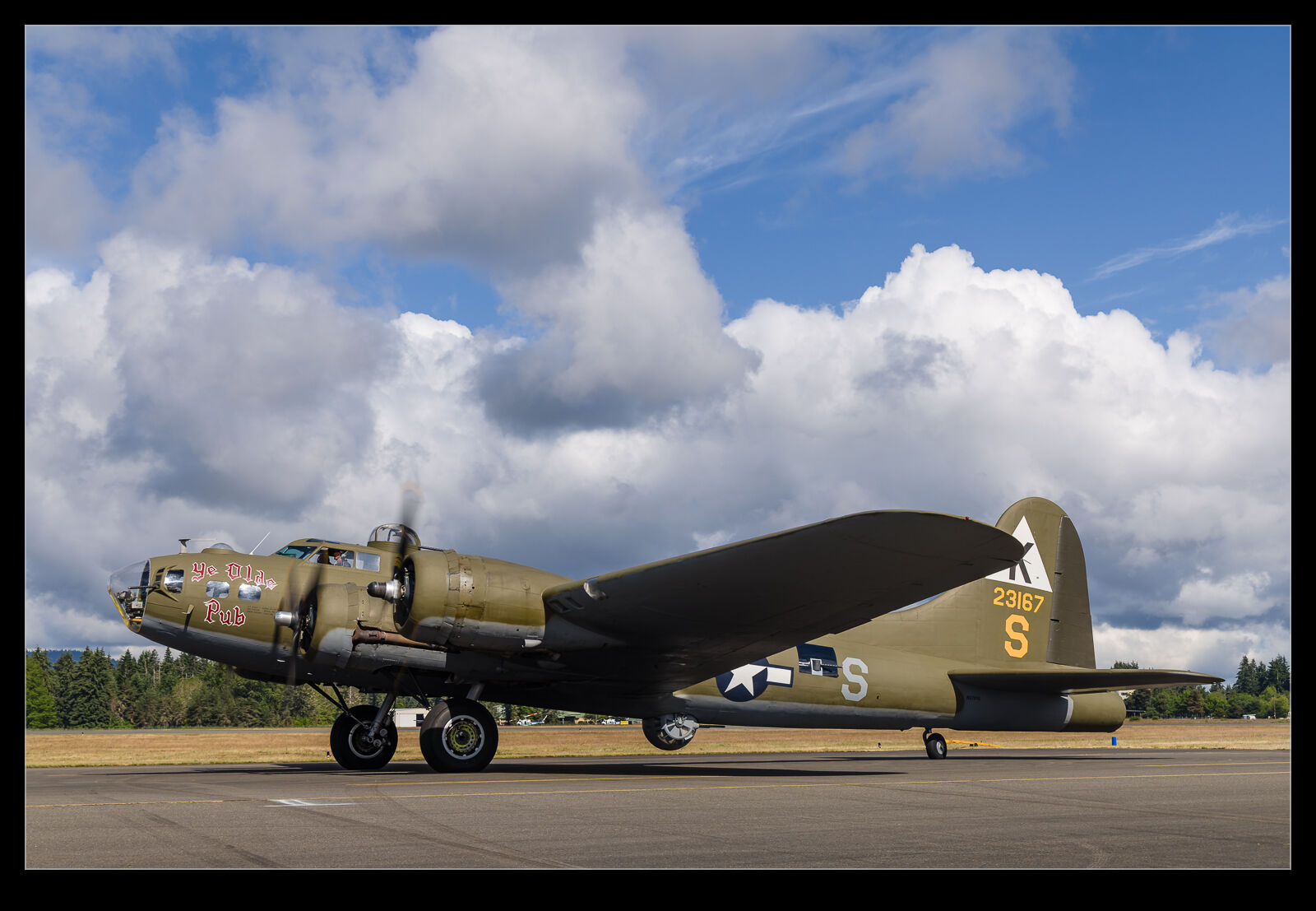 I had been able to photograph the B-17, Ye Olde Pub, when it appeared at the show down at Klamath Falls in Oregon. That was a bit of a hike to get to. In 2024 it put in an appearance at a show a lot nearer to our then home – the Olympic Air Show at Olympia. That made for a far shorter trip to see it – its home in Madras OR is also a fair trek. Olympia is only about 1:45 away if the roads are good.
I had been able to photograph the B-17, Ye Olde Pub, when it appeared at the show down at Klamath Falls in Oregon. That was a bit of a hike to get to. In 2024 it put in an appearance at a show a lot nearer to our then home – the Olympic Air Show at Olympia. That made for a far shorter trip to see it – its home in Madras OR is also a fair trek. Olympia is only about 1:45 away if the roads are good.
 The put on a good flying display for the show. The light was surprisingly good for Olympia! It is held on a weekend in June that has a remarkable track record of delivering substandard weather. The local photographers constantly wish for it to be moved to a different time of year without any success. The plane was operating from the main ramp area which meant it was very close to you when it taxied in and out.
The put on a good flying display for the show. The light was surprisingly good for Olympia! It is held on a weekend in June that has a remarkable track record of delivering substandard weather. The local photographers constantly wish for it to be moved to a different time of year without any success. The plane was operating from the main ramp area which meant it was very close to you when it taxied in and out.
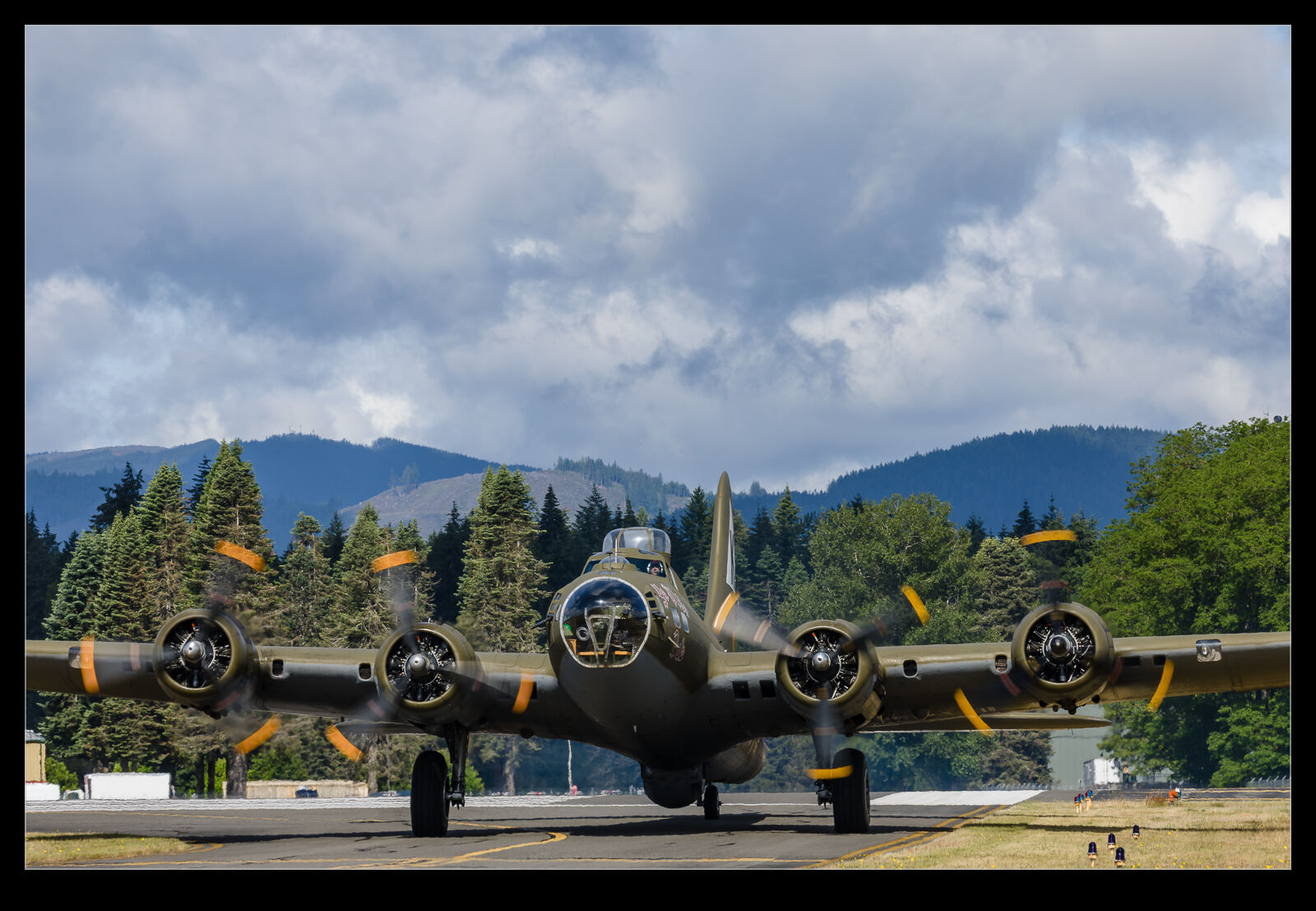 I wasn’t the first to spot this so I can’t claim to be the inspired person, but there is a taxiway marker board at Olympia that says B17. That made it quite easy to get a shot of the plane taxiing out with the B17 board in frame. A bit cutesy but I don’t think anyone was objecting. It seems like a lot of the airworthy B-17s are having major maintenance undertaken at the moment so having Ye Olde Pub active is great. I won’t even get upset about the use of the words “ye olde”!
I wasn’t the first to spot this so I can’t claim to be the inspired person, but there is a taxiway marker board at Olympia that says B17. That made it quite easy to get a shot of the plane taxiing out with the B17 board in frame. A bit cutesy but I don’t think anyone was objecting. It seems like a lot of the airworthy B-17s are having major maintenance undertaken at the moment so having Ye Olde Pub active is great. I won’t even get upset about the use of the words “ye olde”!
After Sunset at SEA as Well
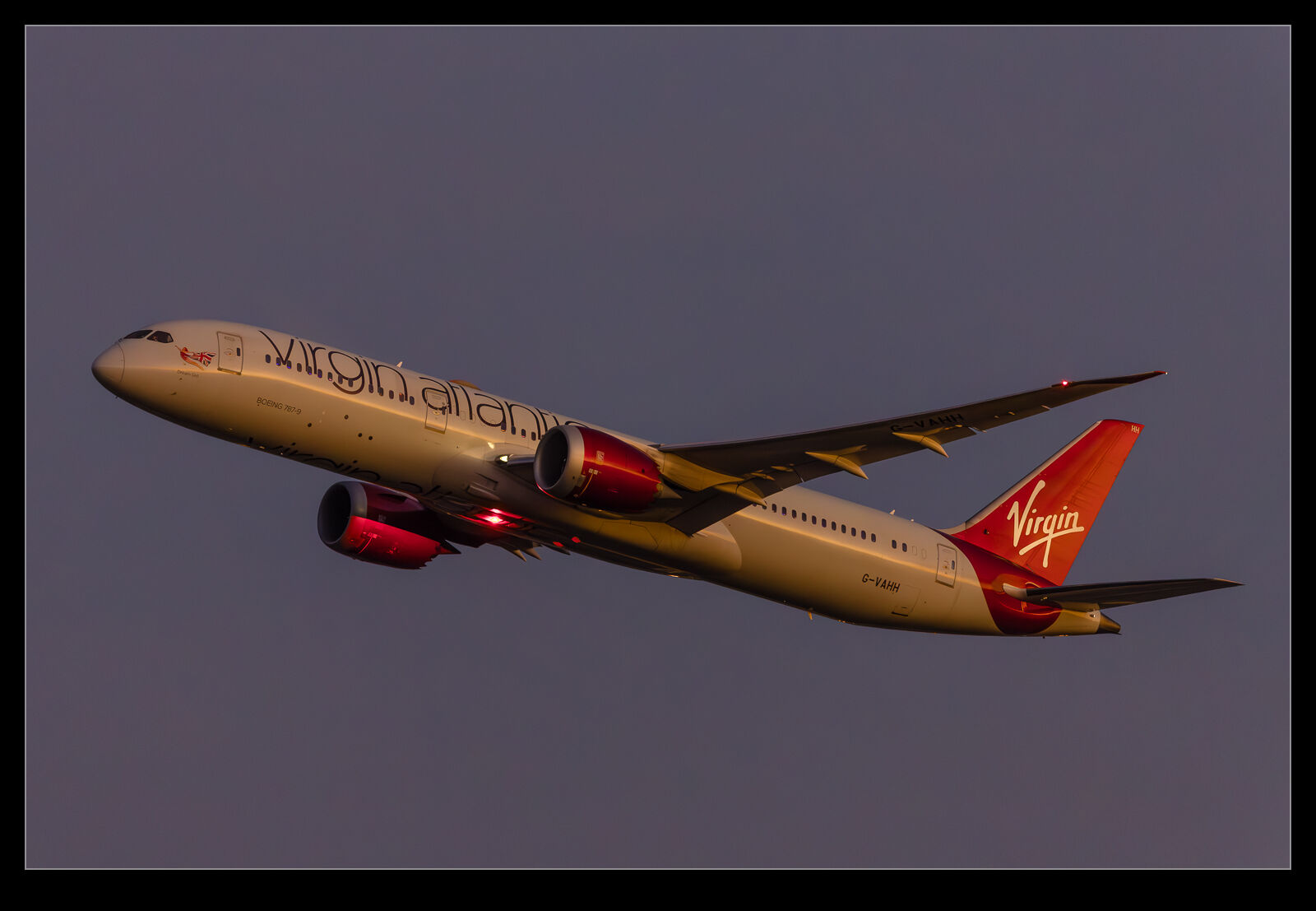 The light at sunset can make for some of the most pleasing shots and I did used to take the time to go to Burien when SEA was on a northerly flow to get some of the heavies departing in the best light. Once the sun goes down, it is tempting to head home but I would hang around a bit longer. The blue hour could make for some pleasing shots too and even when it was getting pretty dark, the amazing low light performance of a modern camera meant you could get something different. Combine that with the super noise reduction capabilities of current processing software and you can achieve shots that would have been impossible a few years ago.
The light at sunset can make for some of the most pleasing shots and I did used to take the time to go to Burien when SEA was on a northerly flow to get some of the heavies departing in the best light. Once the sun goes down, it is tempting to head home but I would hang around a bit longer. The blue hour could make for some pleasing shots too and even when it was getting pretty dark, the amazing low light performance of a modern camera meant you could get something different. Combine that with the super noise reduction capabilities of current processing software and you can achieve shots that would have been impossible a few years ago.
